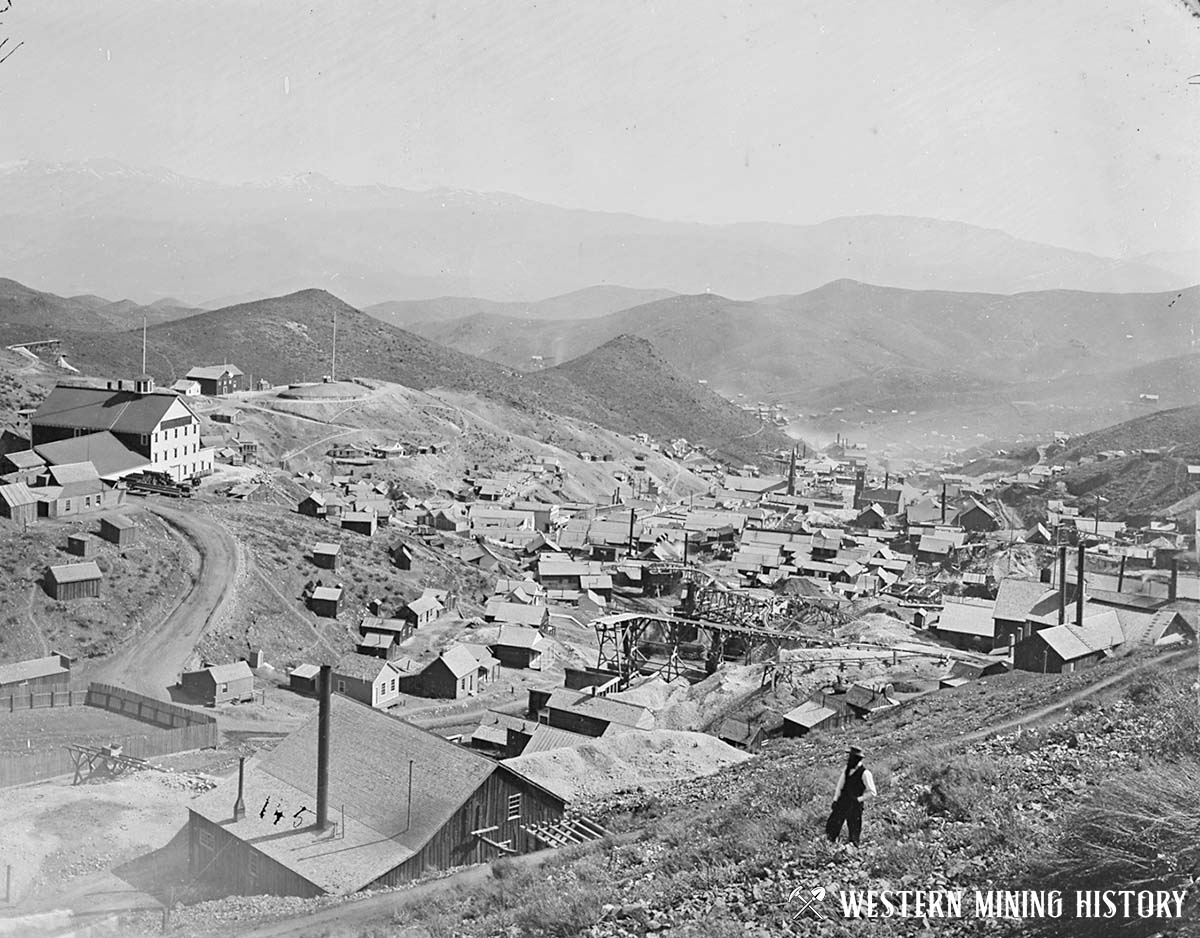Nevada is the location of “The Great Basin”, a desert region characterized by numerous wide valleys bordered by parallel mountain ranges. The climate is generally very dry, and the high altitude brings a range of temperature and weather extremes.
This inhospitable region doesn’t support a lot of life, but it is one of the nation’s richest mineral-bearing regions. The first mines in Nevada were discovered in the 1850s, and by the 1860s new districts were being discovered throughout the state.
These are some of the best historical photos from Nevada’s notable mining districts.
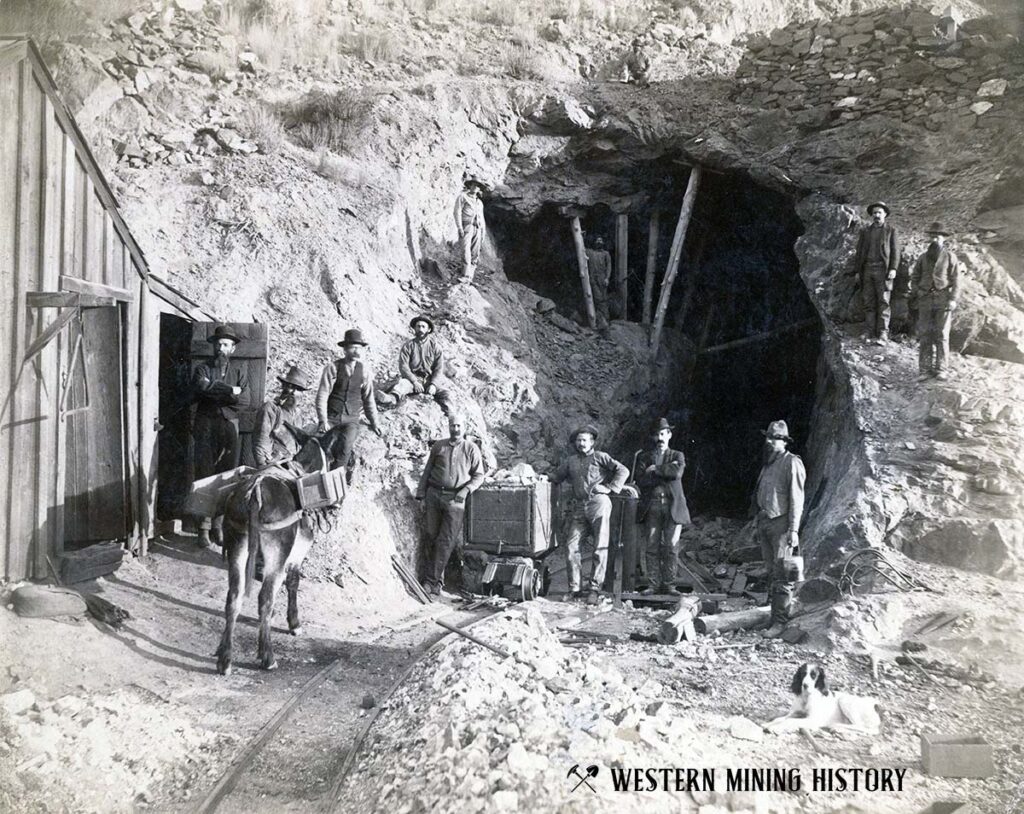
Austin
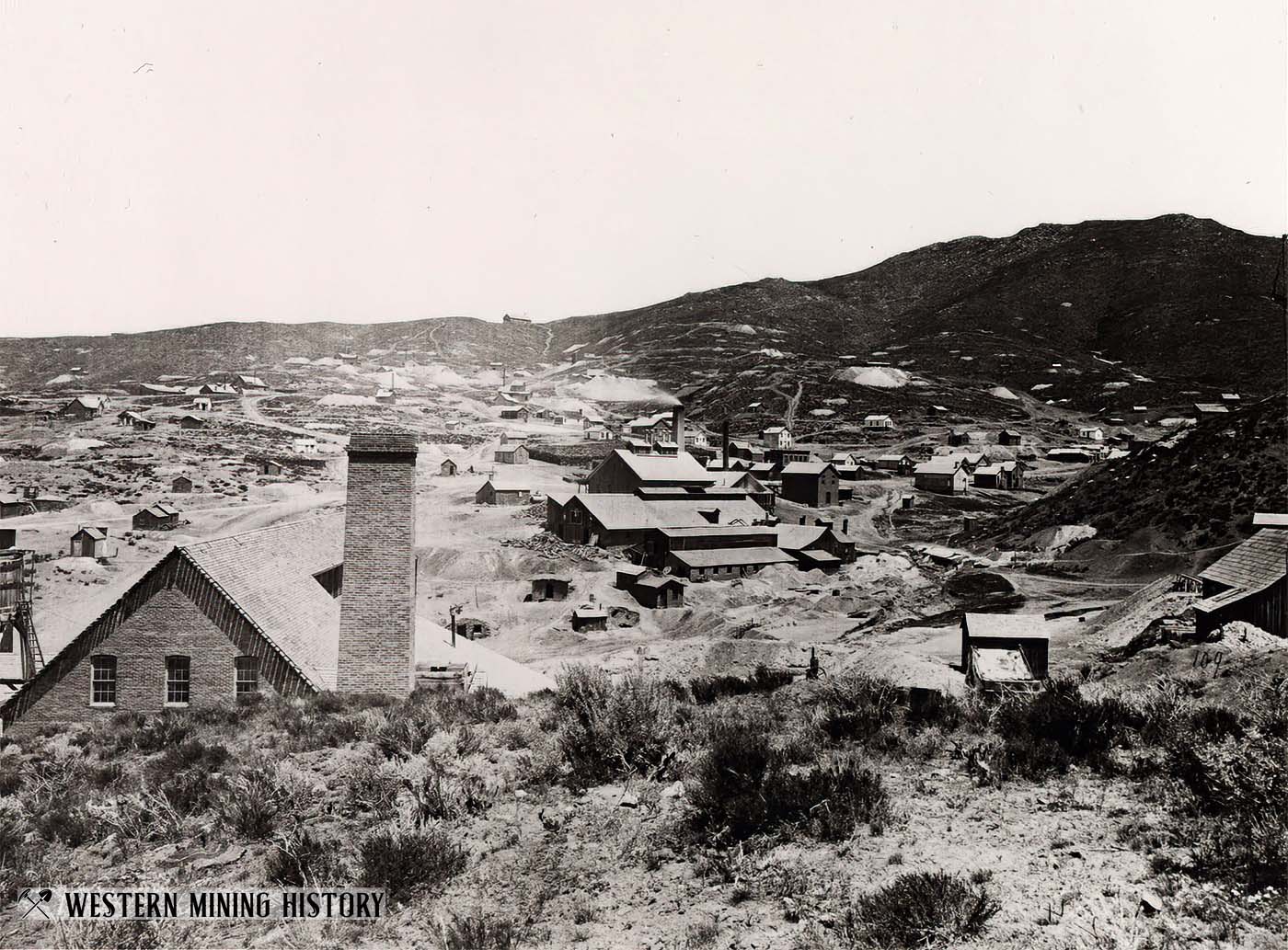
The discovery of silver at Austin in the early 1860s resulted central Nevada’s first major mining excitement. The founding of the town of Austin created a staging point for prospectors that pushed deeper into the Nevada wilderness, making many new discoveries and settling numerous new camps and towns.
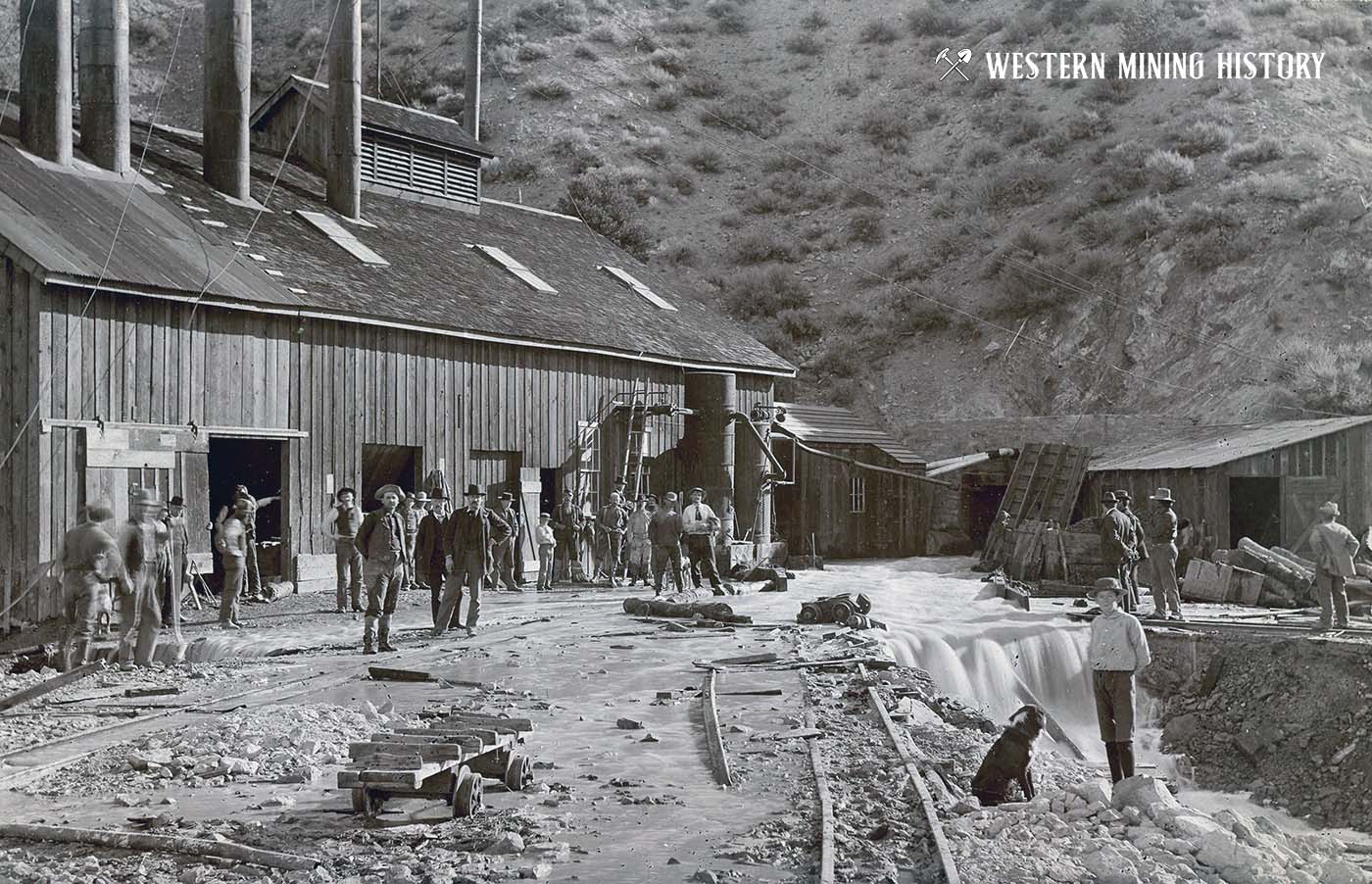
Although Austin was in a remote part of Nevada, it’s location on the established Pony Express route made it one of the easier boom towns to reach at the time, which accelerated the pace at which the district was developed.
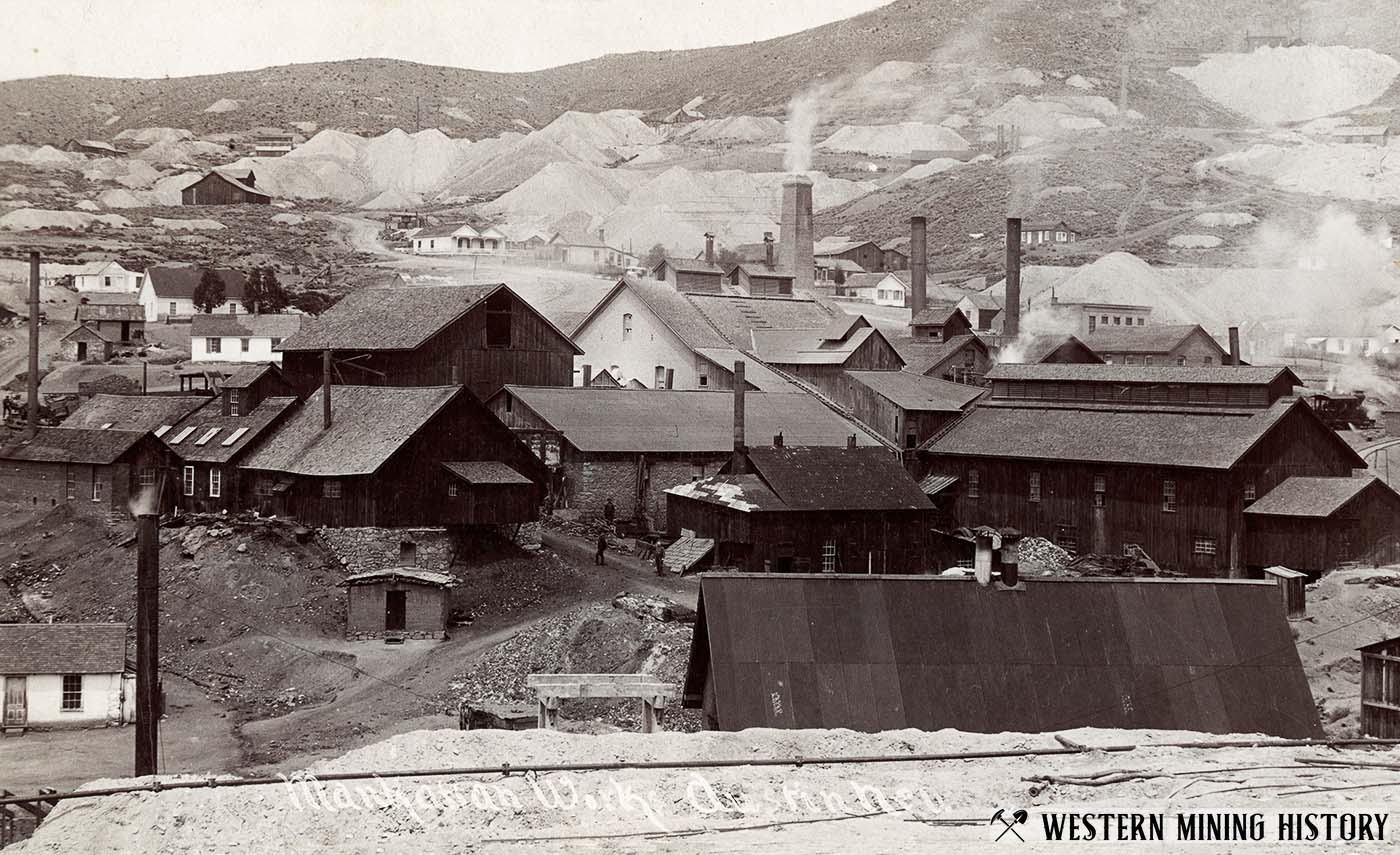
The early 1880s saw a decline in production from Austin mines and by 1887 most major mines were closed. Almost $20 million in silver production is credited to the district up until this point.
Candelaria
Silver was first discovered at Candelaria by a group of Spanish prospectors in 1863. Not much mining occurred in the area until the discovery of the Northern Belle Mine in 1873.
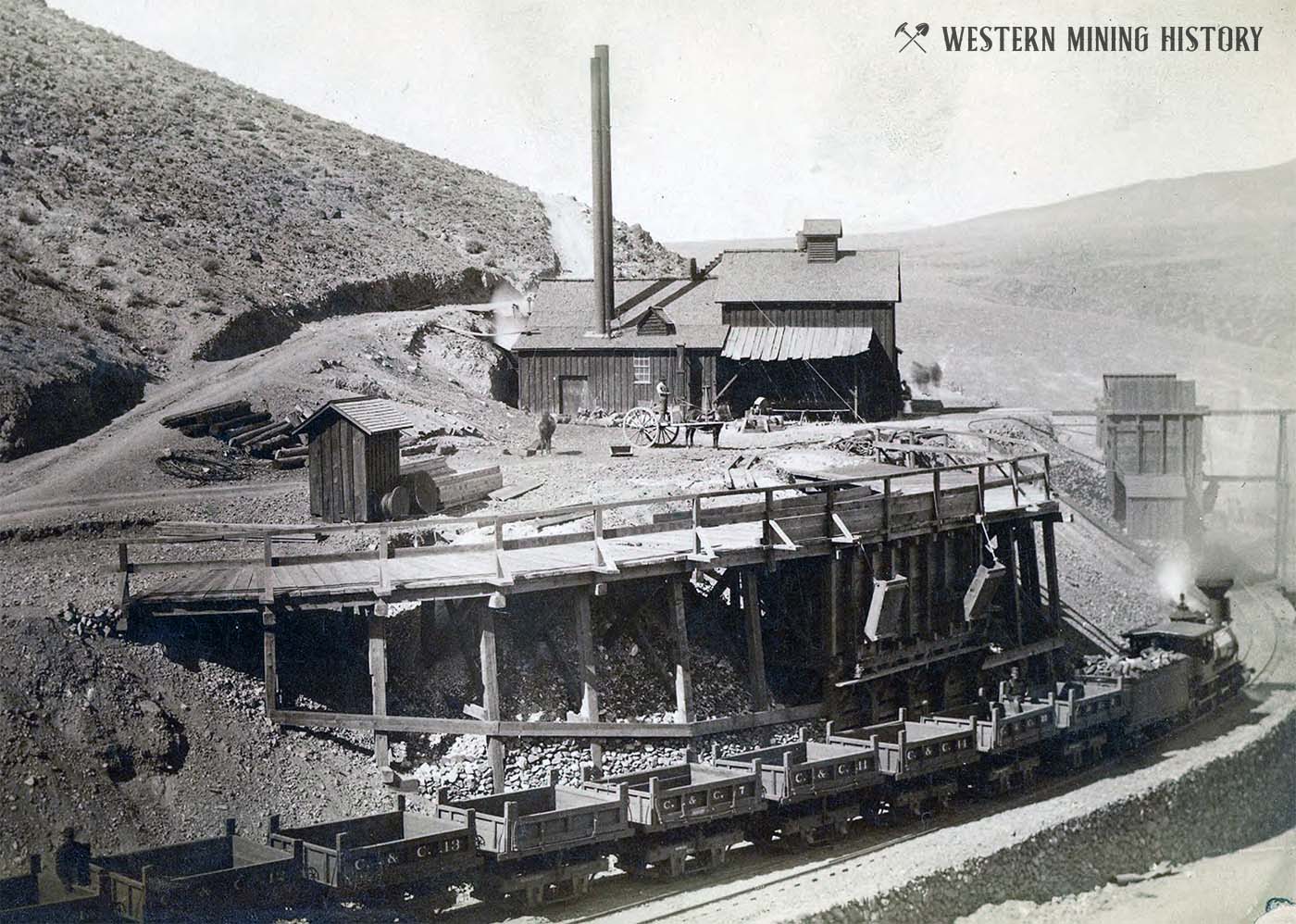
Initial development of the district was slow, largely due to a lack of water. By 1876 the mines were finally developed to the point to support a town, and Candelara was established that year.
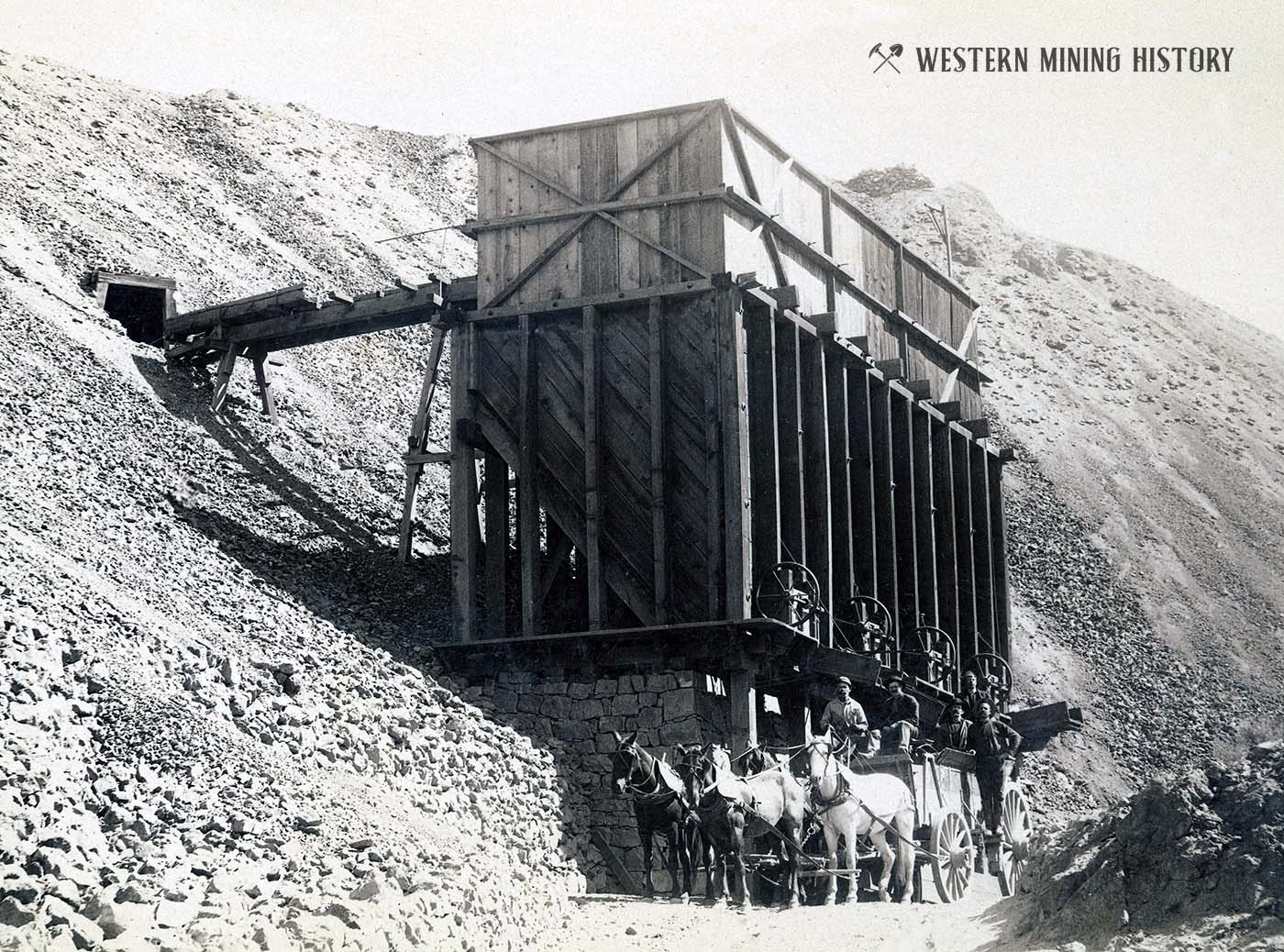
The Mount Diablo mine was located at the settlement of Metallic City, also known as Pickhandle Gulch. The following photo from 1889 shows the headquarters of that mine. The home on the left is that of the mine superintendent named Shockley. The building on the lower left (only part of the roof is visible) is the assay office. Also visible is an ore wagon, and in the distance the ore bin of the Mount Diablo mine.
An interesting detail is the small yard on the right side of the image. Prior to the completion of a twenty-five mile long pipeline and reservoir in 1882, water was so scarce that it was hauled in by the barrel, resulting in a bath costing two dollars, half of a miners daily pay.
It is interesting to note that even after the completion of the water works which had to supply water to both the mines and the towns of Candelaria and Metallic City, precious water was still used to create a small oasis as seen in the photo.
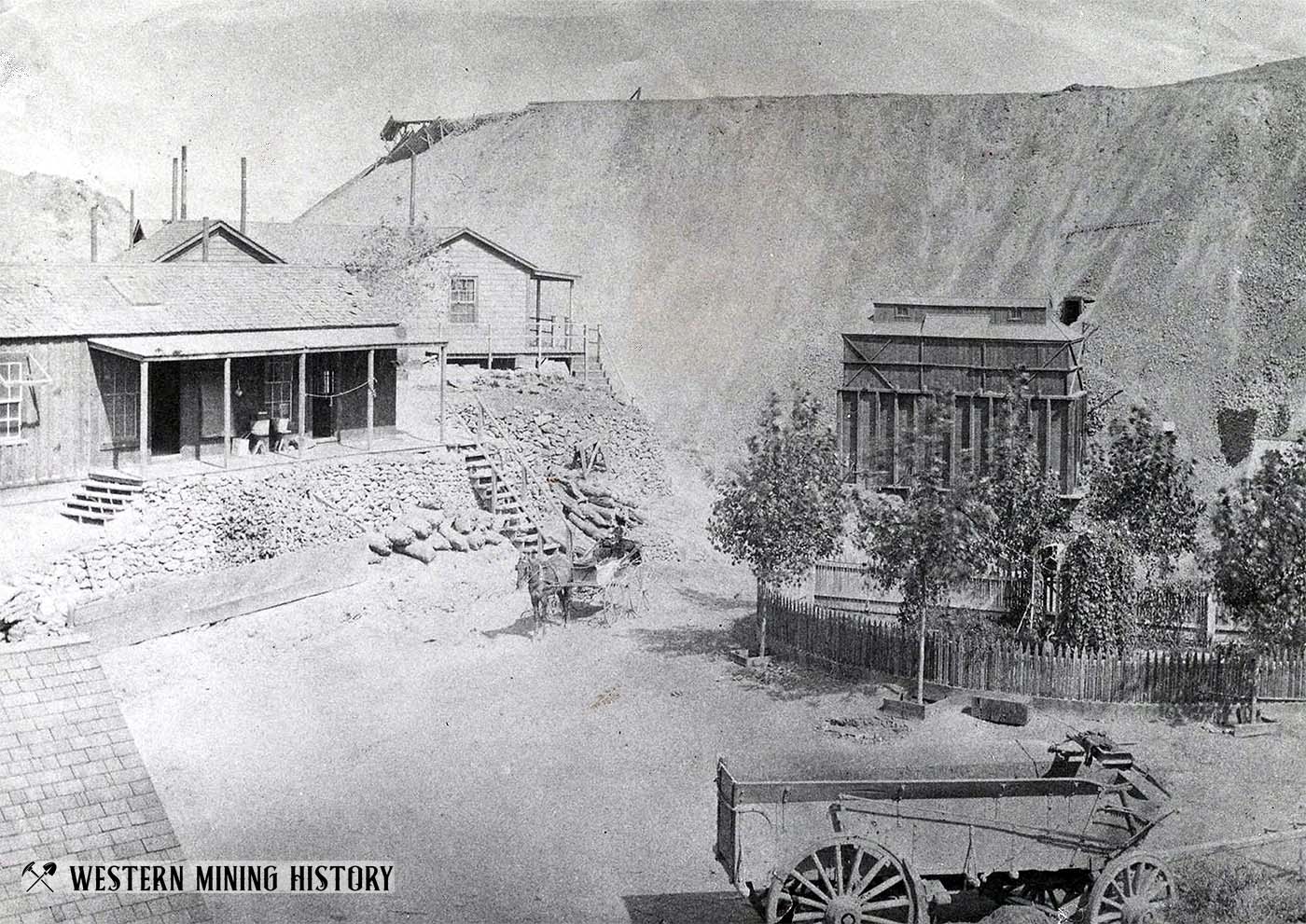
The following image is a rare view of a mine surveyor at work underground in a Candelaria mine in the early 1900s.
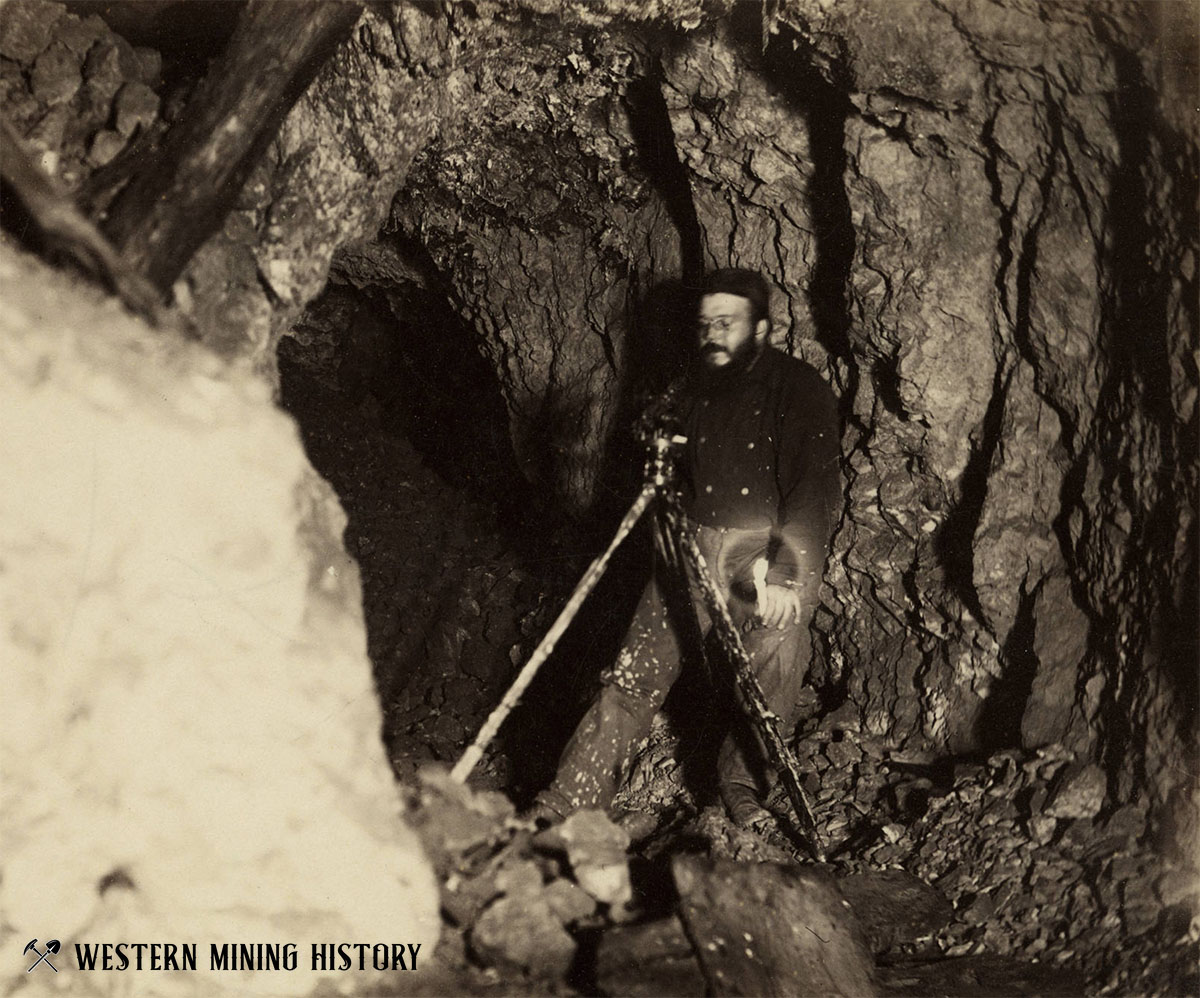
The town of Belleville was established as a milling center for Candelaria ores, at a location where water was easier to obtain. Belleville was the district’s first settlement, however the construction of a 27-mile pipeline brought water to Candelaria in 1882, which caused Belleville to decline as milling was moved closer to the mines.
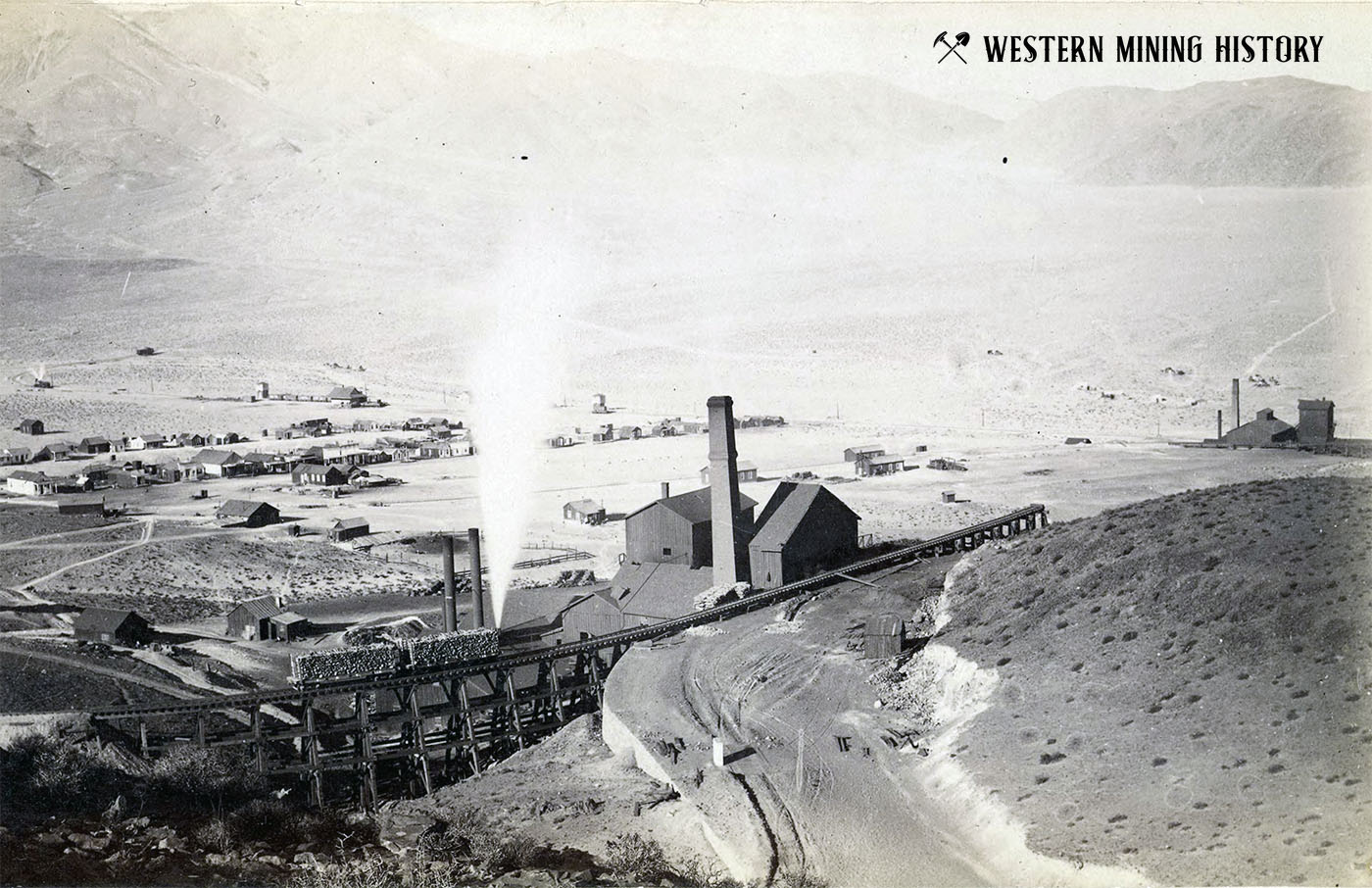
According to a 1914 newspaper article, “Belleville at one time was quite an important point in the early days and practically the outpost of civilization in southern Nevada. It was in the old narrow gauge railway depot, which is still standing in Belleville, in which the late United States Senator George Nixon, as station agent and telegrapher, began his career in Nevada.”
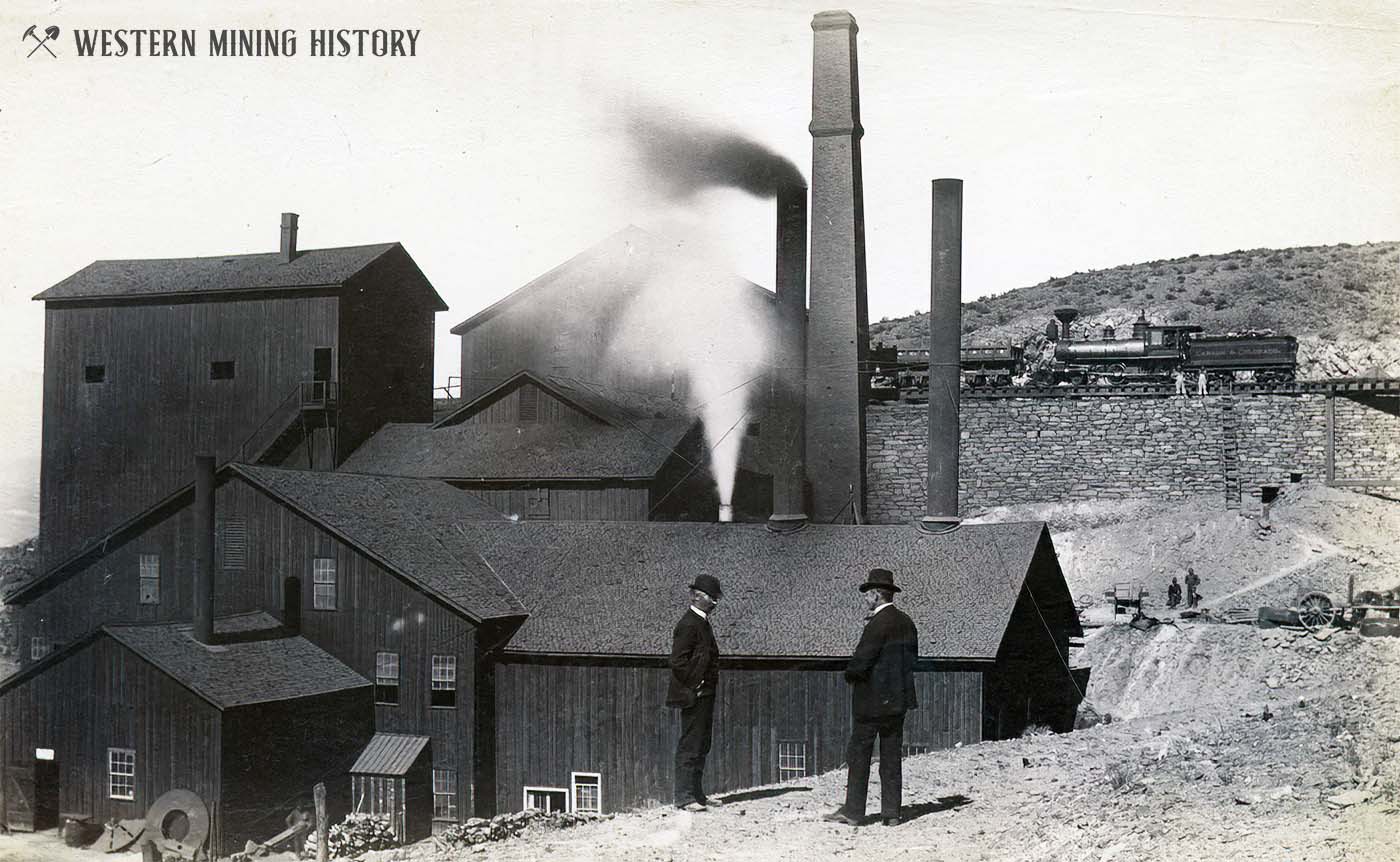
The mines here were in decline by the turn of the century, and both Candelaria and Belleville are now ghost towns.
Eureka
Known as “the Pittsburgh of the West”, Eureka was the nation’s first important silver-lead district, and was Nevada’s second richest mineral producer during the 1800s.
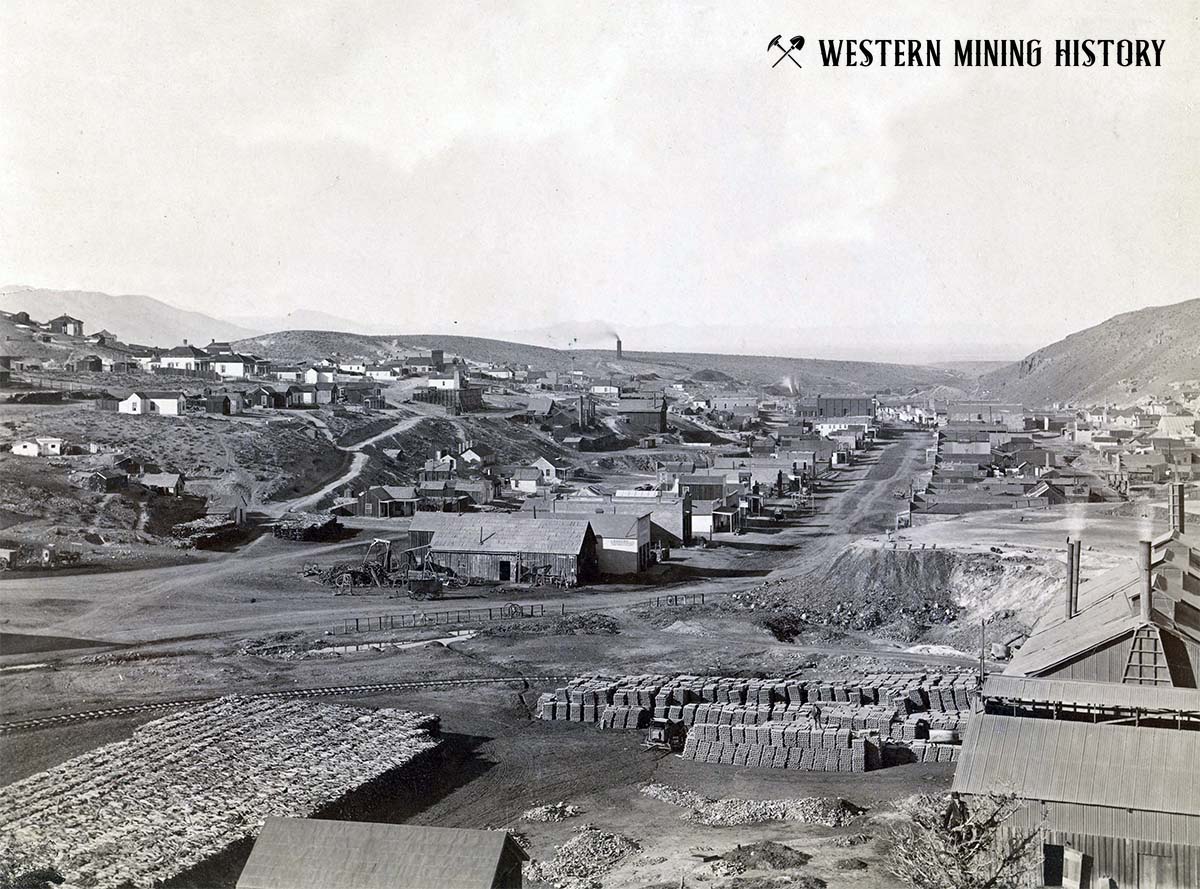
Mining peaked in 1878 with over $5 million produced. Over 9,000 people lived in and around Eureka during this time, supporting over 100 saloons, dozens of gambling halls, theaters, multiple newspapers, hotels, restaurants, an opera house, and five fire companies.
Sixteen smelters operated just outside town, treating ore from over 50 active mines.
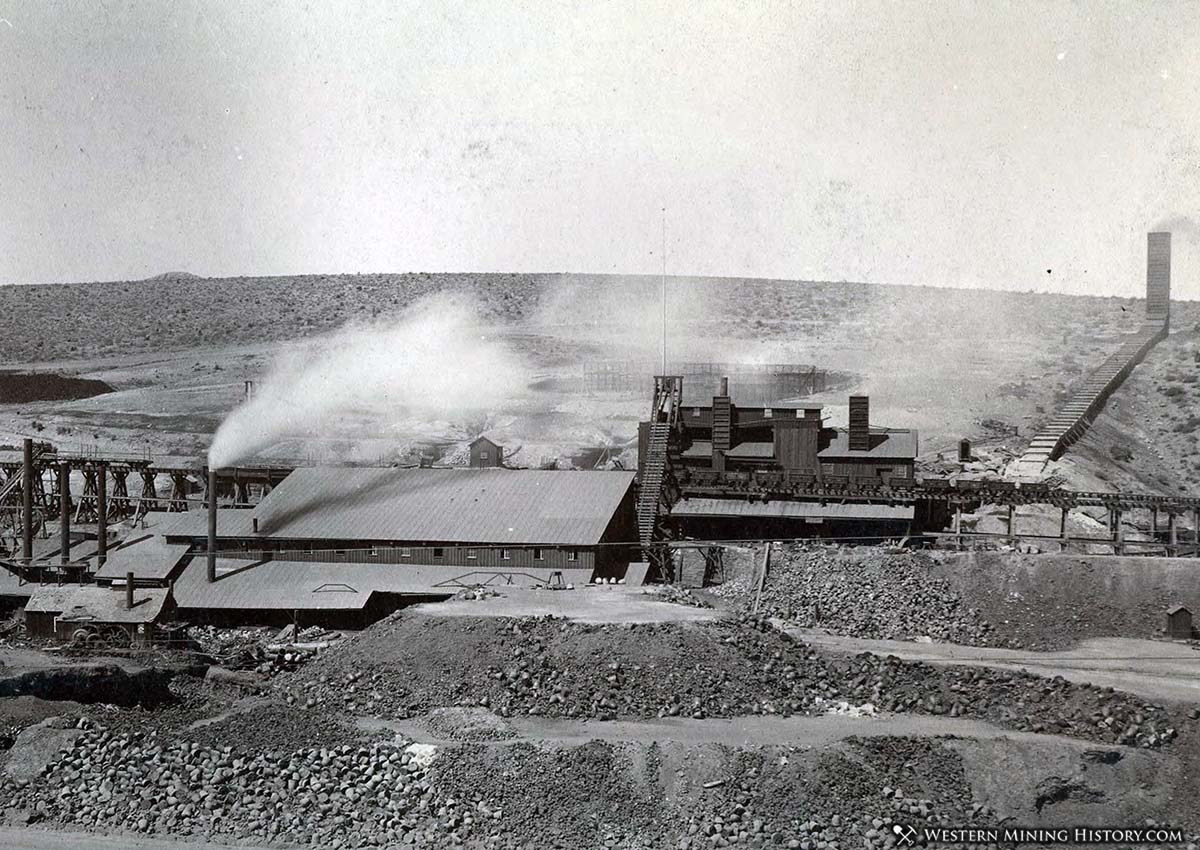
Pictured below is the Lawton shaft of the Eureka Mine, one of the district’s numerous important producers.
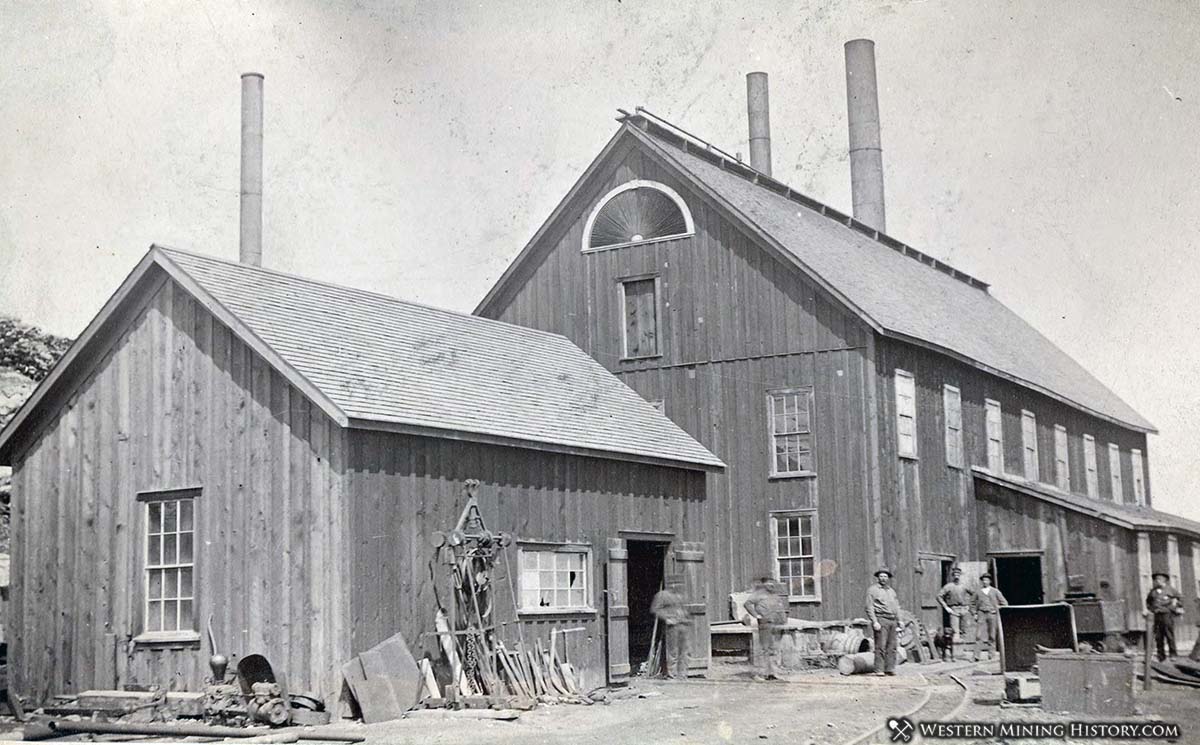
Goldfield
Goldfield was the site of a rare post-1900 major gold discovery in Nevada. The ore initially was very rich, spurring rapid growth of the town from 1904 to 1908. Goldfield became Nevada’s largest city with over 20,000 people. Virgil Earp was made sheriff here in 1904 and Wyatt Earp also called Goldfield home.
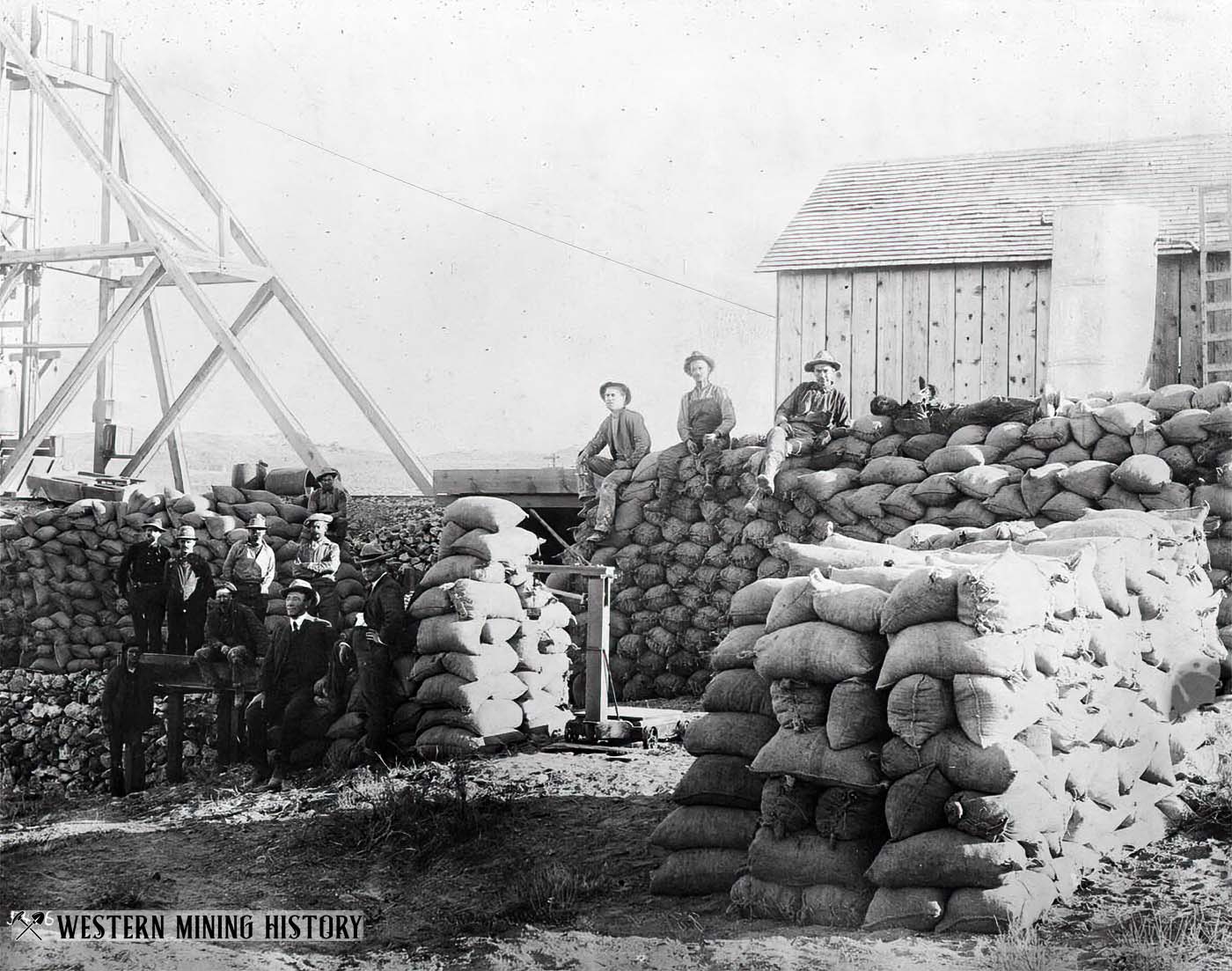
1904 was the year that defined Goldfield as a boom town. The mines were starting to produce rich returns and thousands of men arrived in the camp to work at the mines or try their own luck at prospecting. By August the mines were producing over $10,000 in gold ore every day.
In this scene, owners of the Rochester-Goldfield Company pose with miners at one of their properties at Goldfield, Nevada ca. 1905. This company owned many claims in the area, with a newspaper reporting that the company kept “two or three prospectors constantly in the field looking for good properties.”
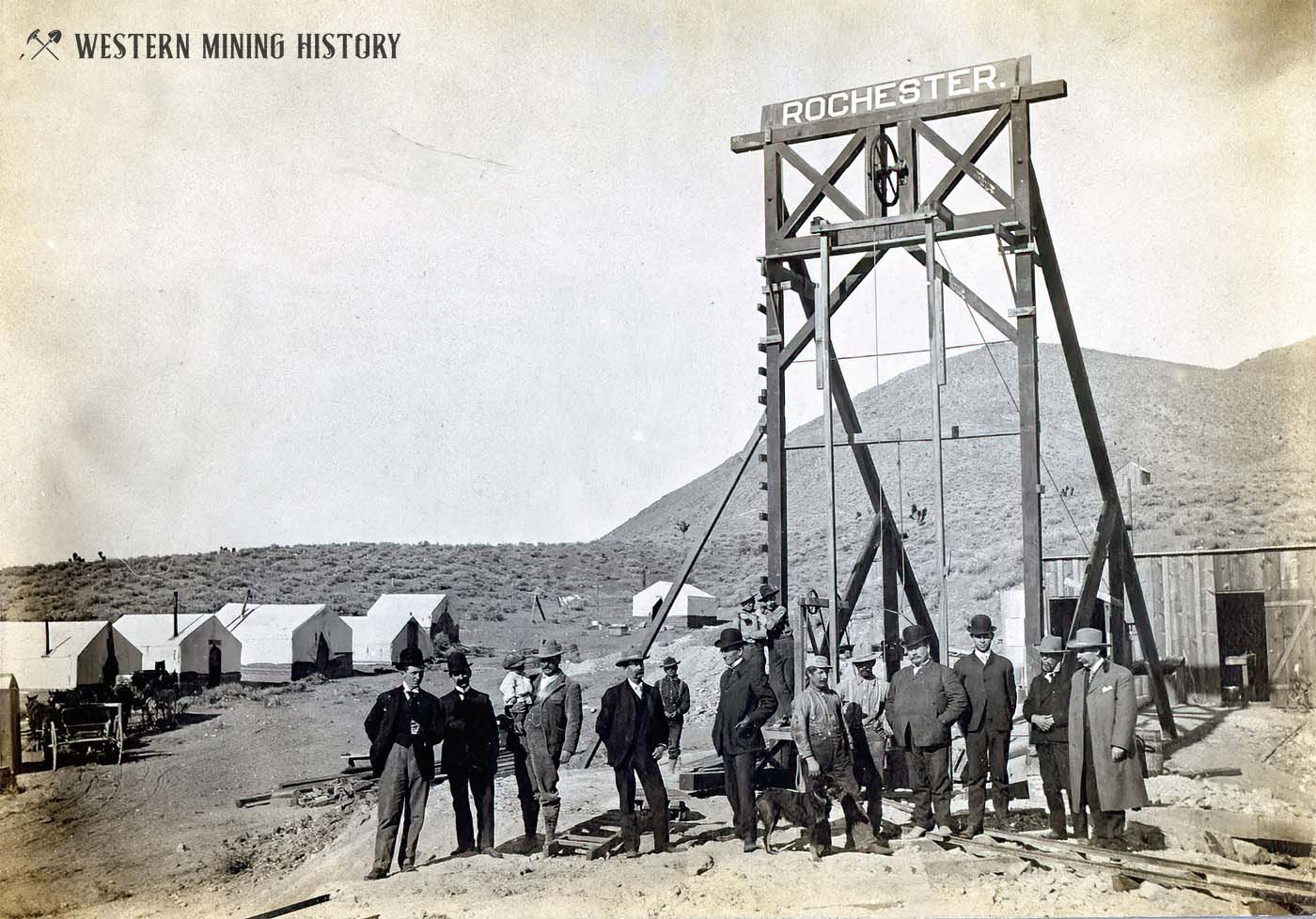
In the photo below, “Rich Ore is being hand sorted and shipped. The deputy is watching for high-grading.” The man in the center that is hidden in the shadow is the deputy, his badge is visible as the bright object on his chest.
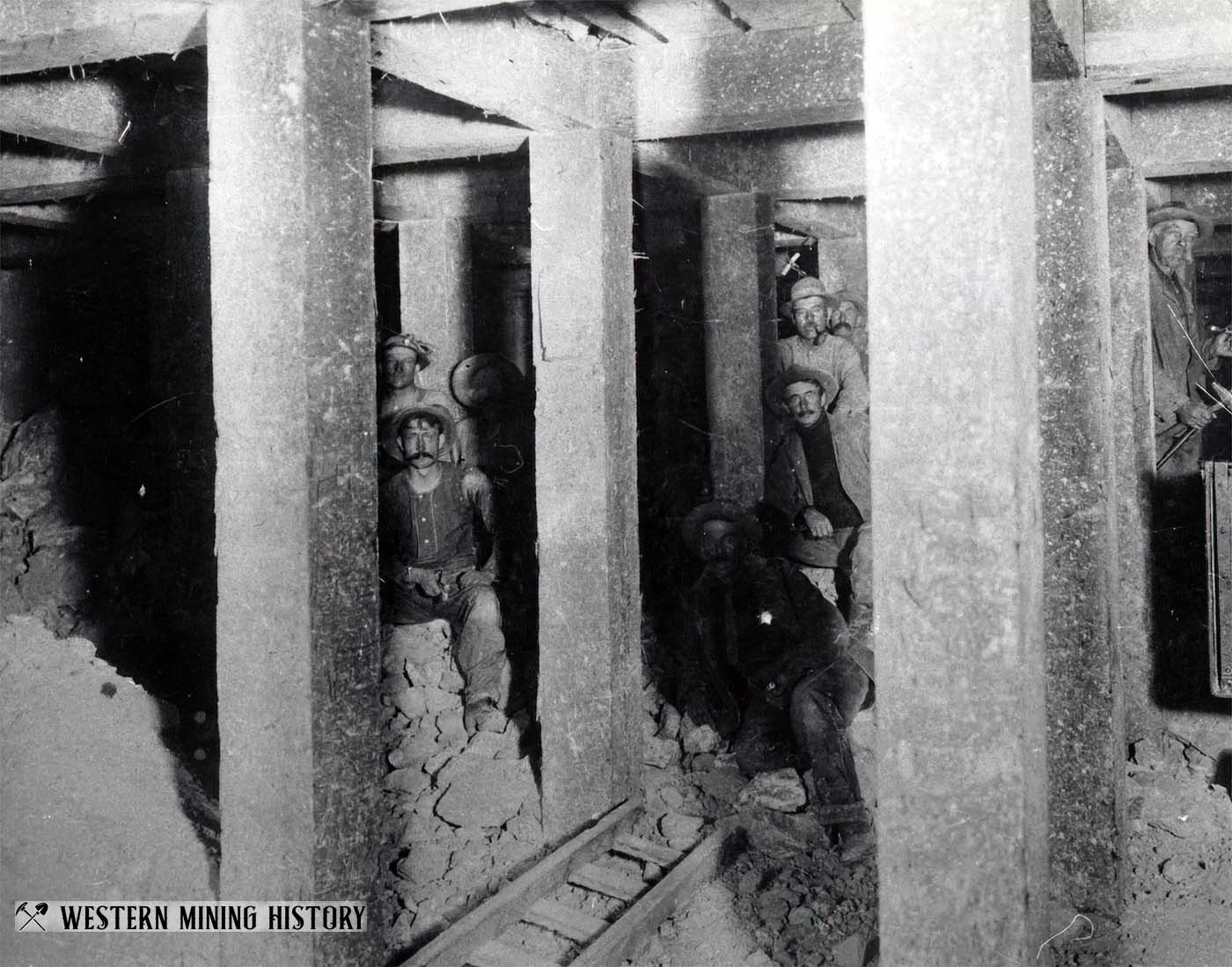
The earliest mines of Goldfield produced a substantial amount of high-grade ore, as seen in the photo below of the January lease. The bags are all full of high-value ore ready to be shipped to distant mills.
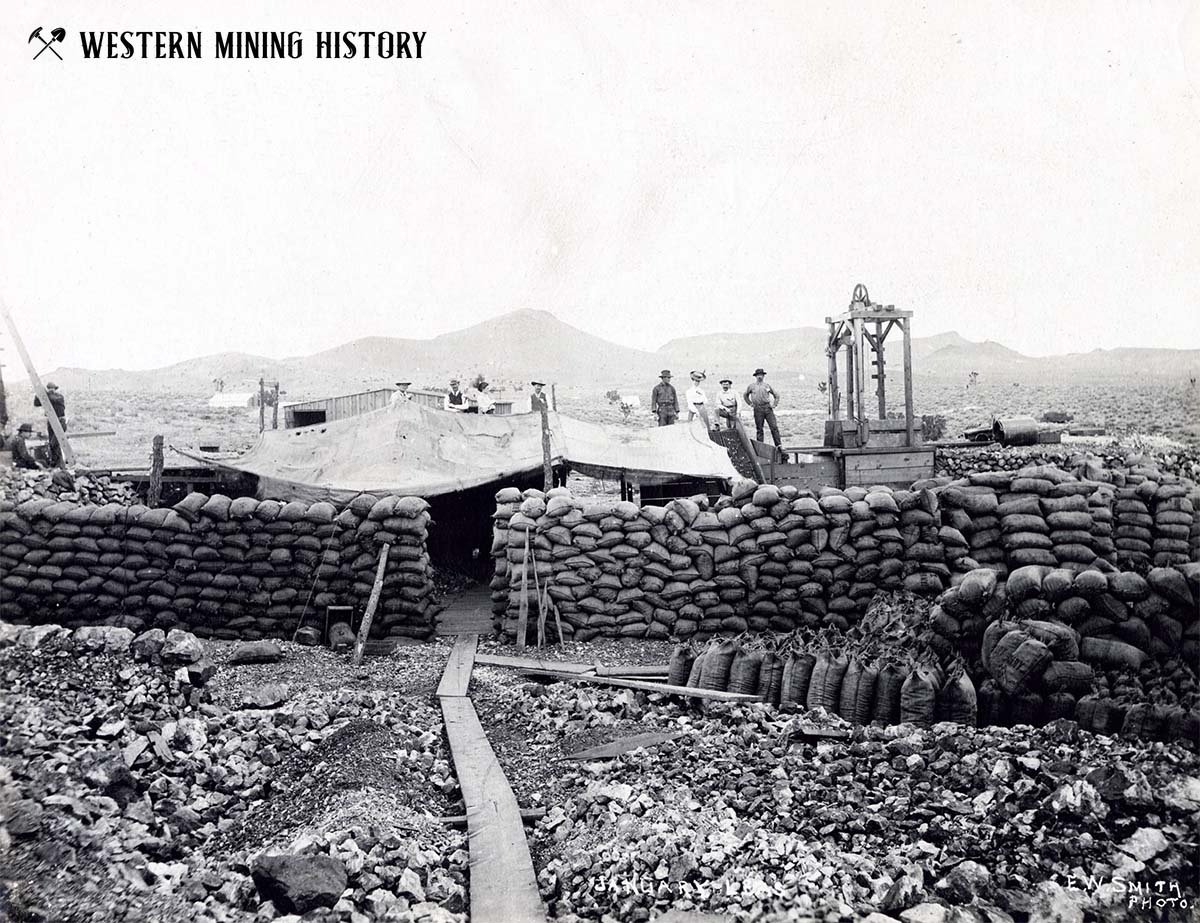
Mine owners in new districts often found themselves short of capital to develop their claims. The leasing system was developed to allow groups of miners or separate mining companies to work claims so that the owners did not need to front the capital themselves. Shown below are a group of miners working the January lease in 1904.
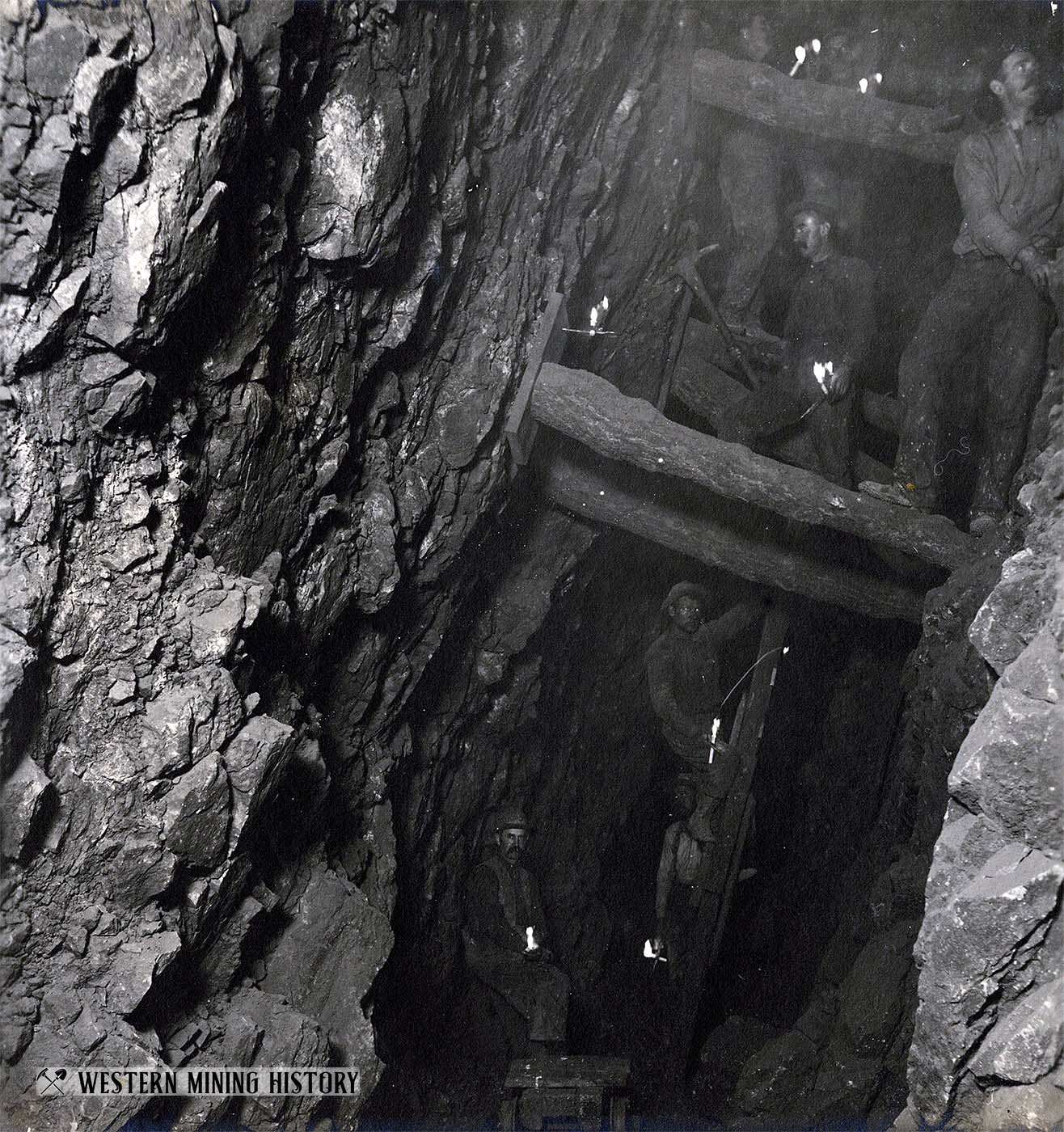
While the richest Goldfield mines were mostly consolidated and worked by just a few companies by 1910, the early mines were often small operations with modest infrastructure.
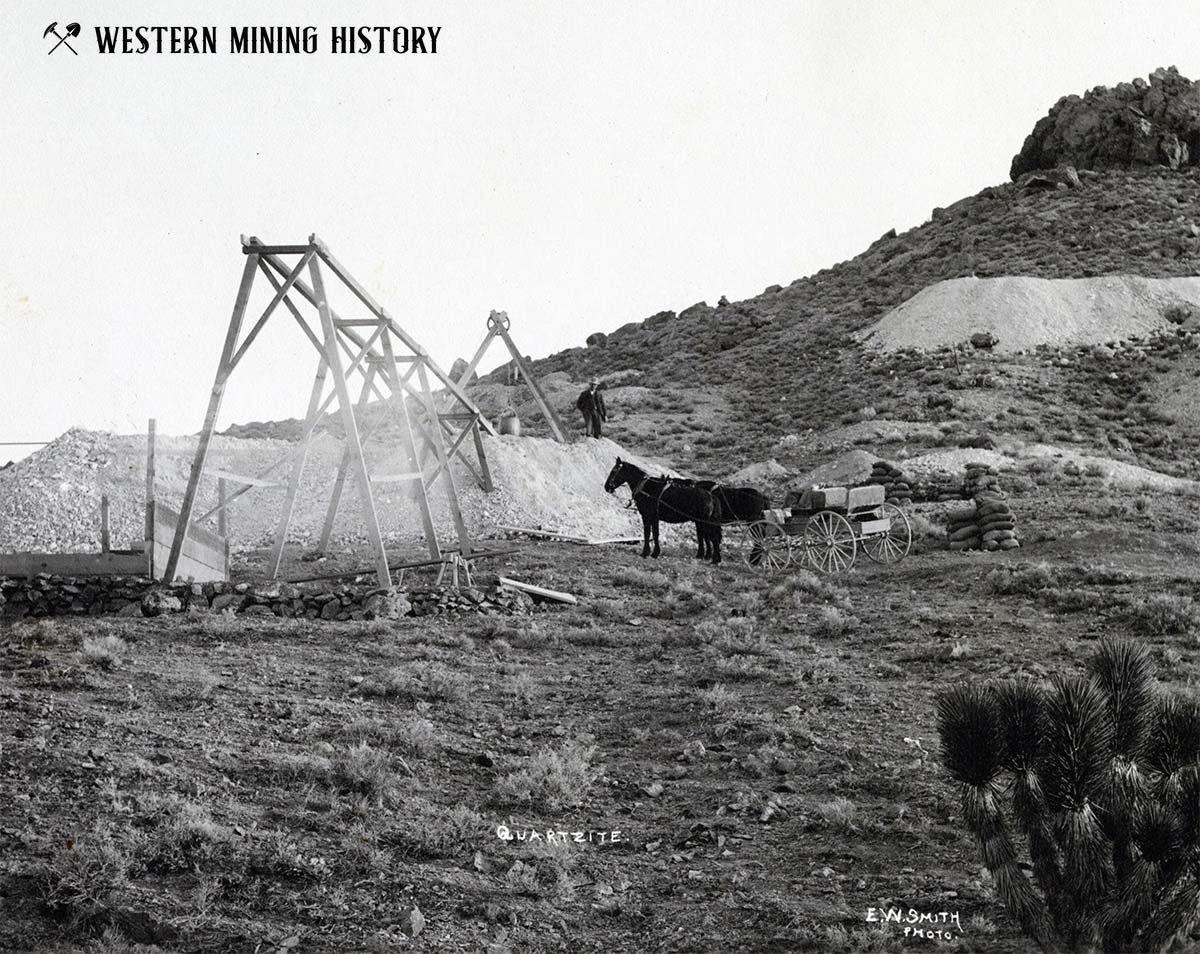
These well-equipped prospectors are ready to explore the region around the boom town of Goldfield around 1904.
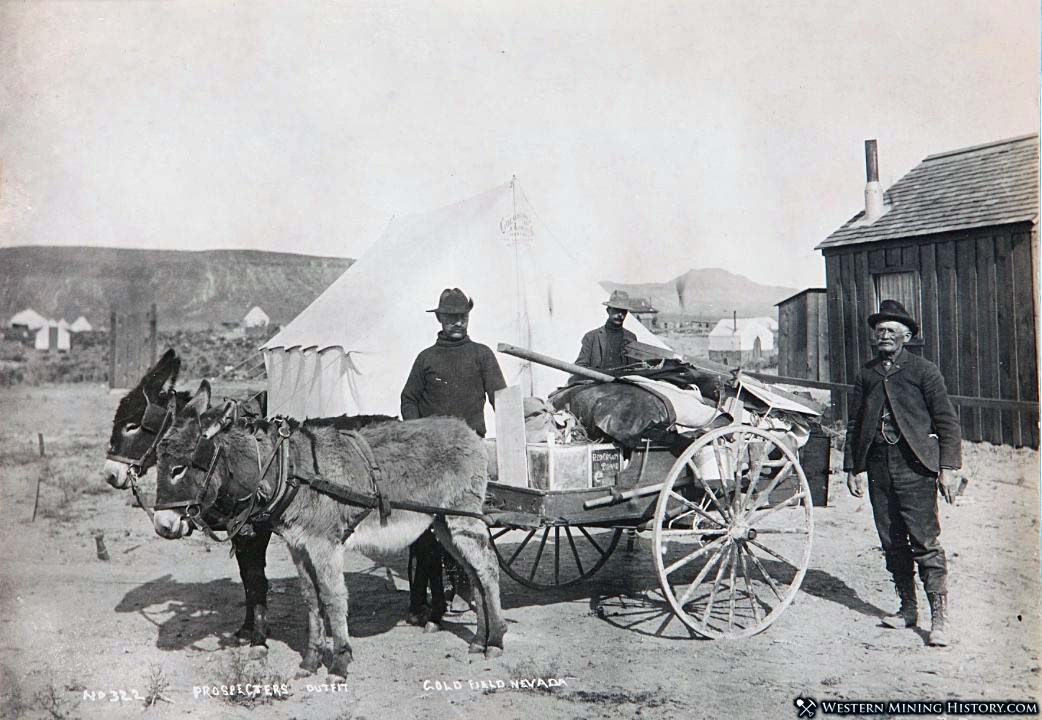
In this photo from July of 1906, A man takes advantage of a rare instance of heavy rain to do some gold panning right in one of Goldfield’s streets.
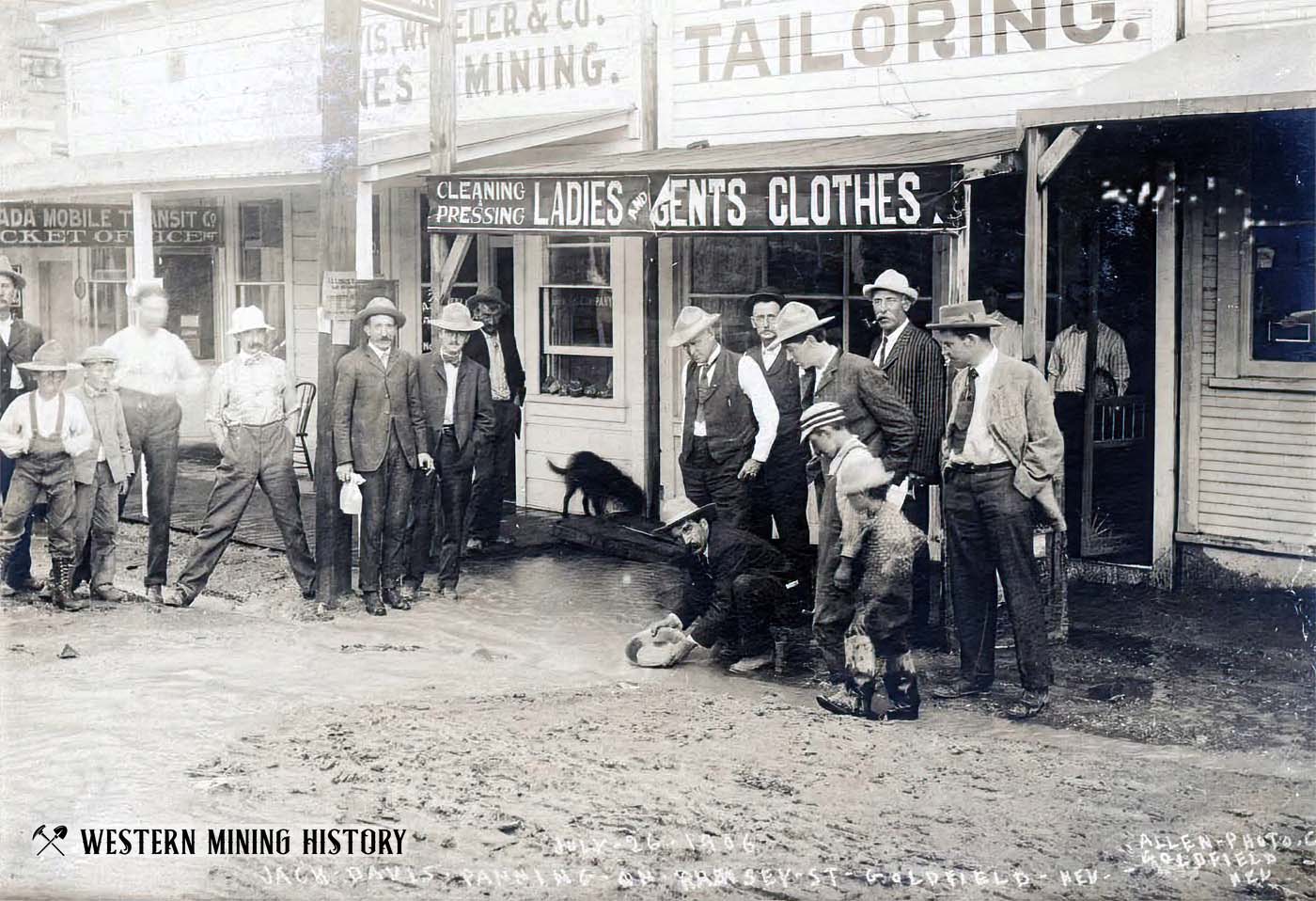
The mountains surrounding Goldfield were home to lesser-known mines that were discovered by the prospectors pouring into the area during the first decade of the 1900s. The image below depicts the mining camp of the Great Eastern mine.
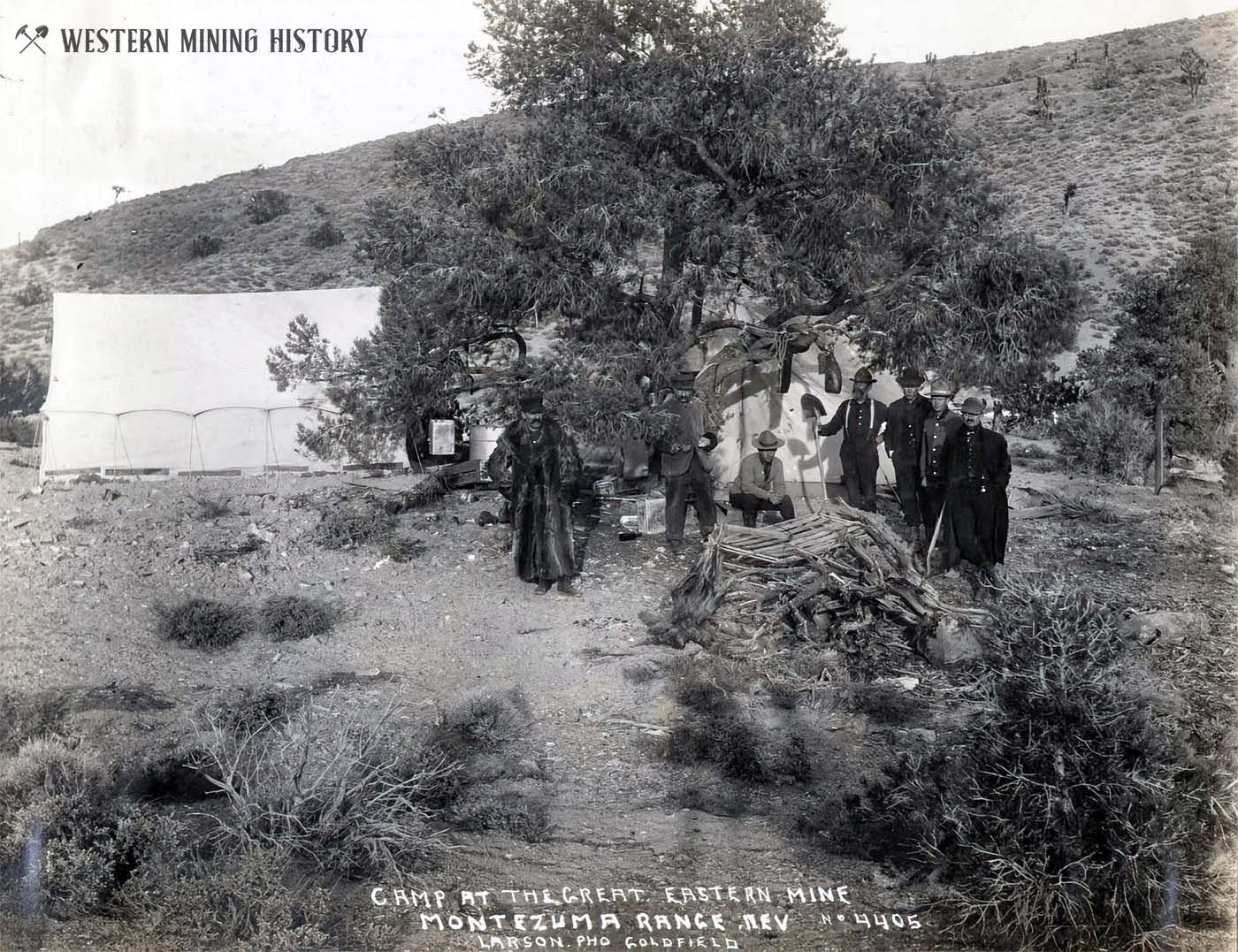
Tonopah
Rich silver deposits were discovered at Tonopah in 1900 by Jim Butler. The mines here would make Tonopah one of the nation’s most important mining areas, however like most new districts the first mines were modest operations.
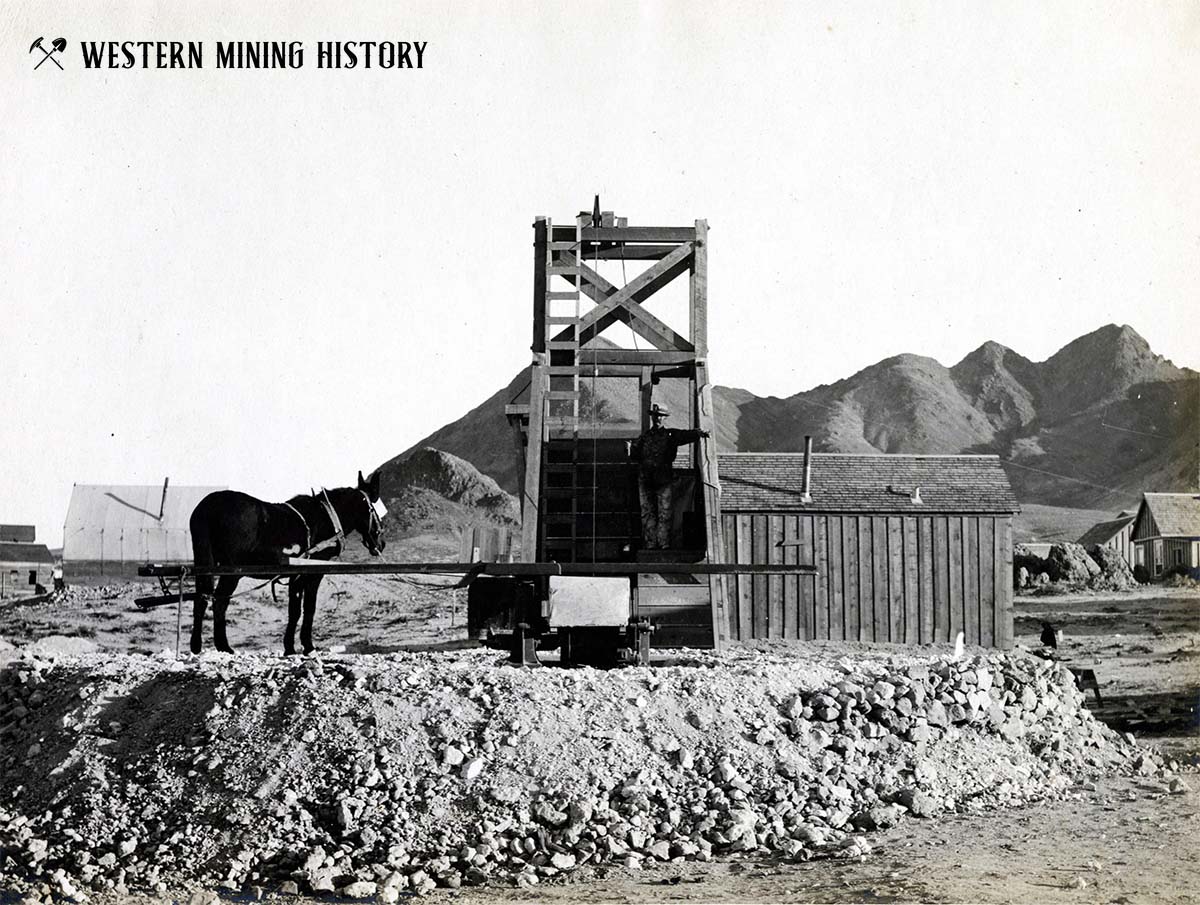
A November, 1901 newspaper reported on the excitement at Tonopah: “The present large influx of people into Tonopah is only equaled by the influx of wealth in the shape of fat smelter returns for ore shipped from the camp.”
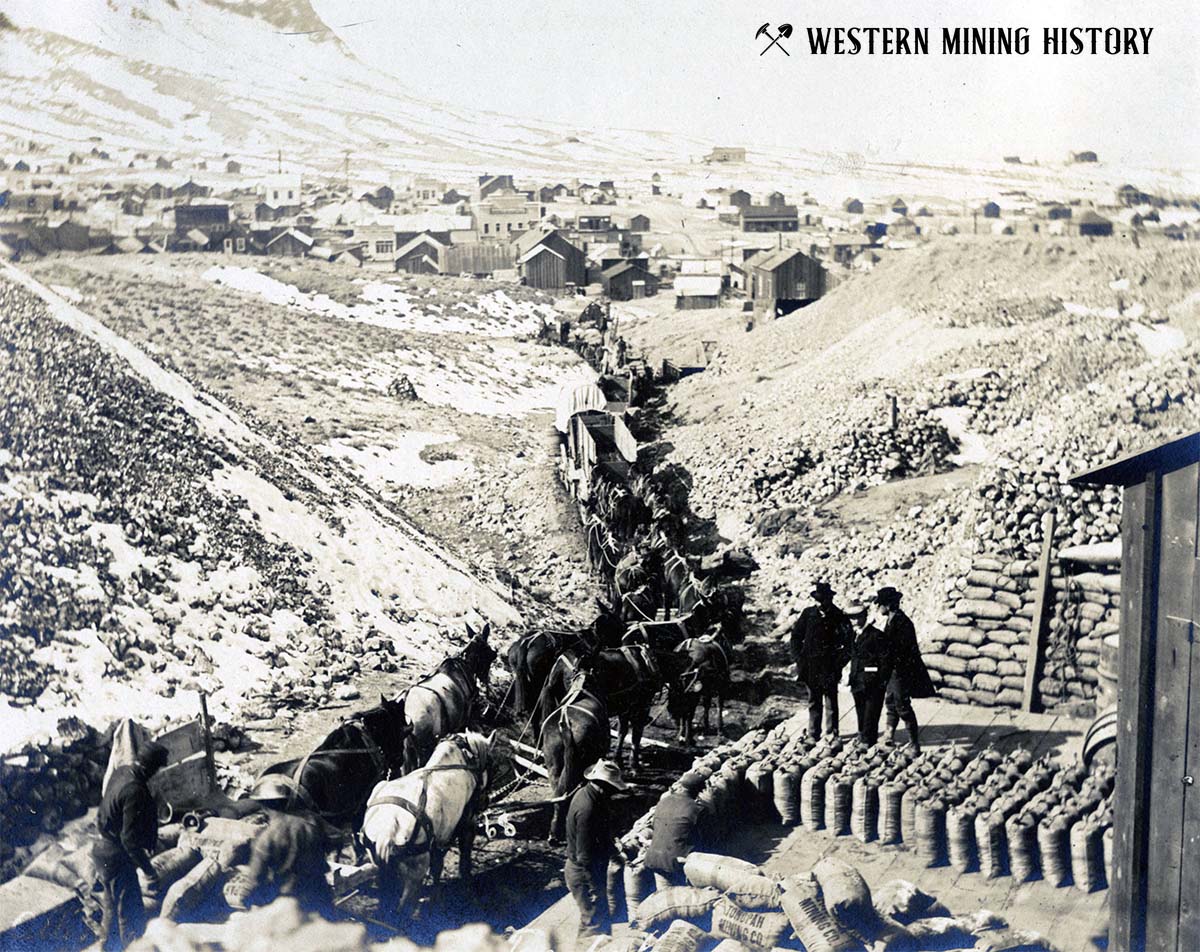
By 1902 the mines of Tonopah were already rich and attracting international attention, but additional ore discoveries in the winter of 1902-03 further boosted the camp’s fortunes. In april of 1903 Tonopah mining stocks were listed on the San Francisco stock exchange.
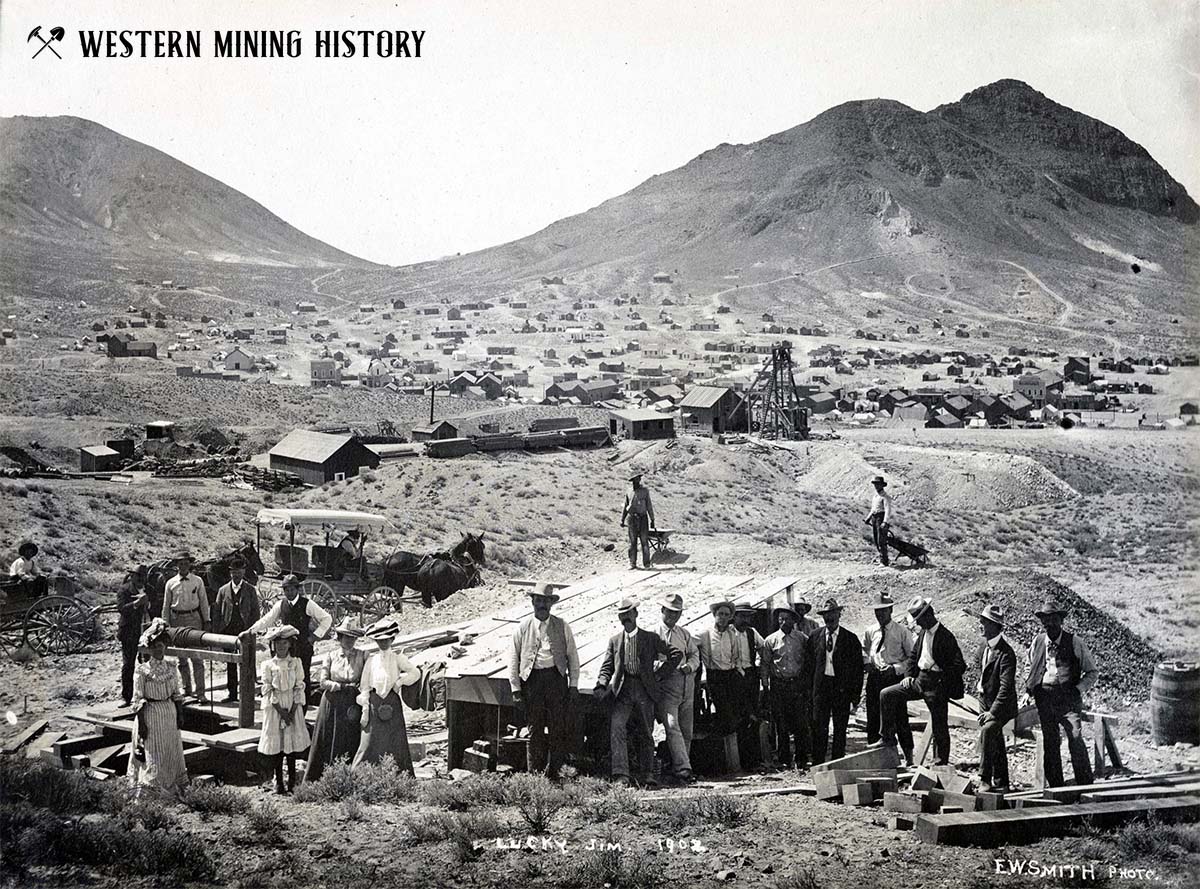
Tonopah peaked during the years 1910-1914 with over $8 million produced from the mines annually, making it one of the richest mining districts in the West.
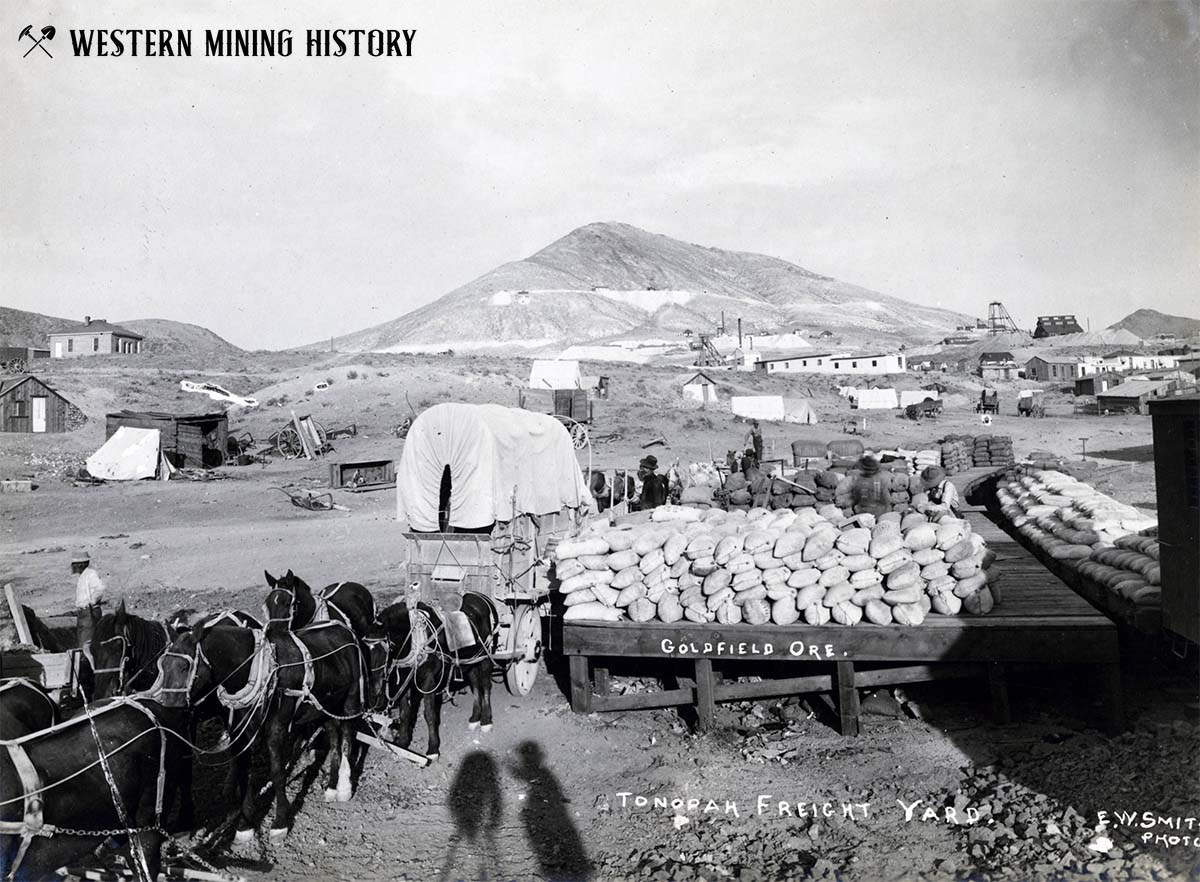
This ca. 1905 photo from Tonopah, Nevada illustrates how very rich silver ores were cut right from surface veins. Also note the elaborate house built right among the mines. Homes like this usually served as the home of the mine owner or manager.
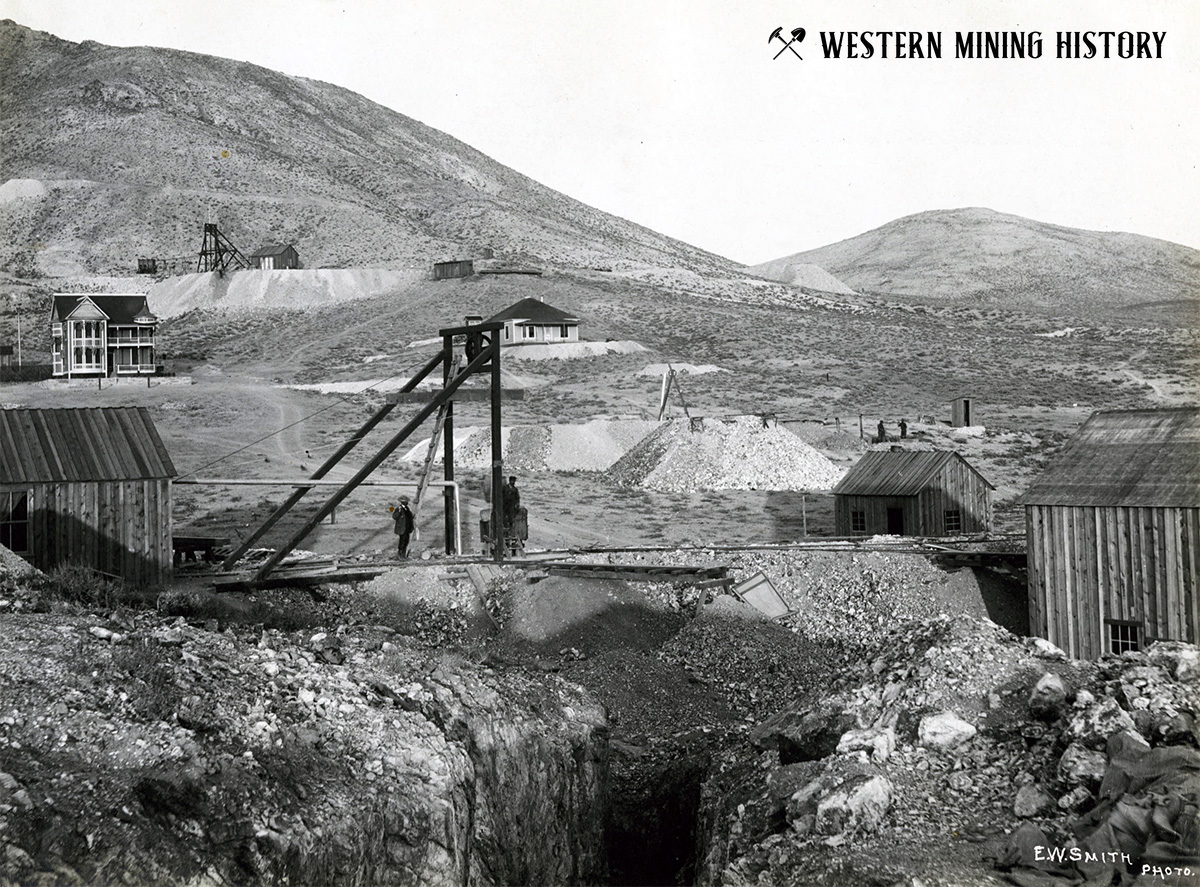
Gold Reef was the site of a mining excitement that commenced in the fall of 1908 about six mile southeast of Tonopah. The mines here did not live up to the hype however, and the town was abandoned as quickly as it appeared.
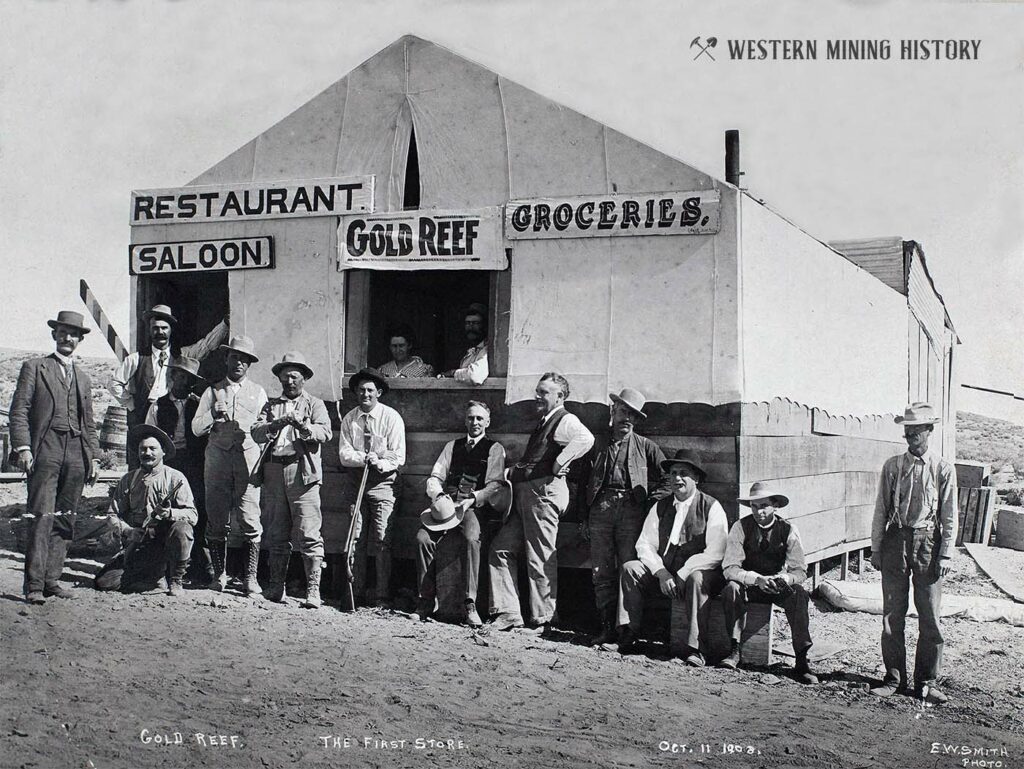
The Gold Reed mine was located in a very remote location tens of miles southeast of Tonopah. Pictured below is miner O. K. Reed and his son Little O. K. near his claim at Gold Reed in 1920.
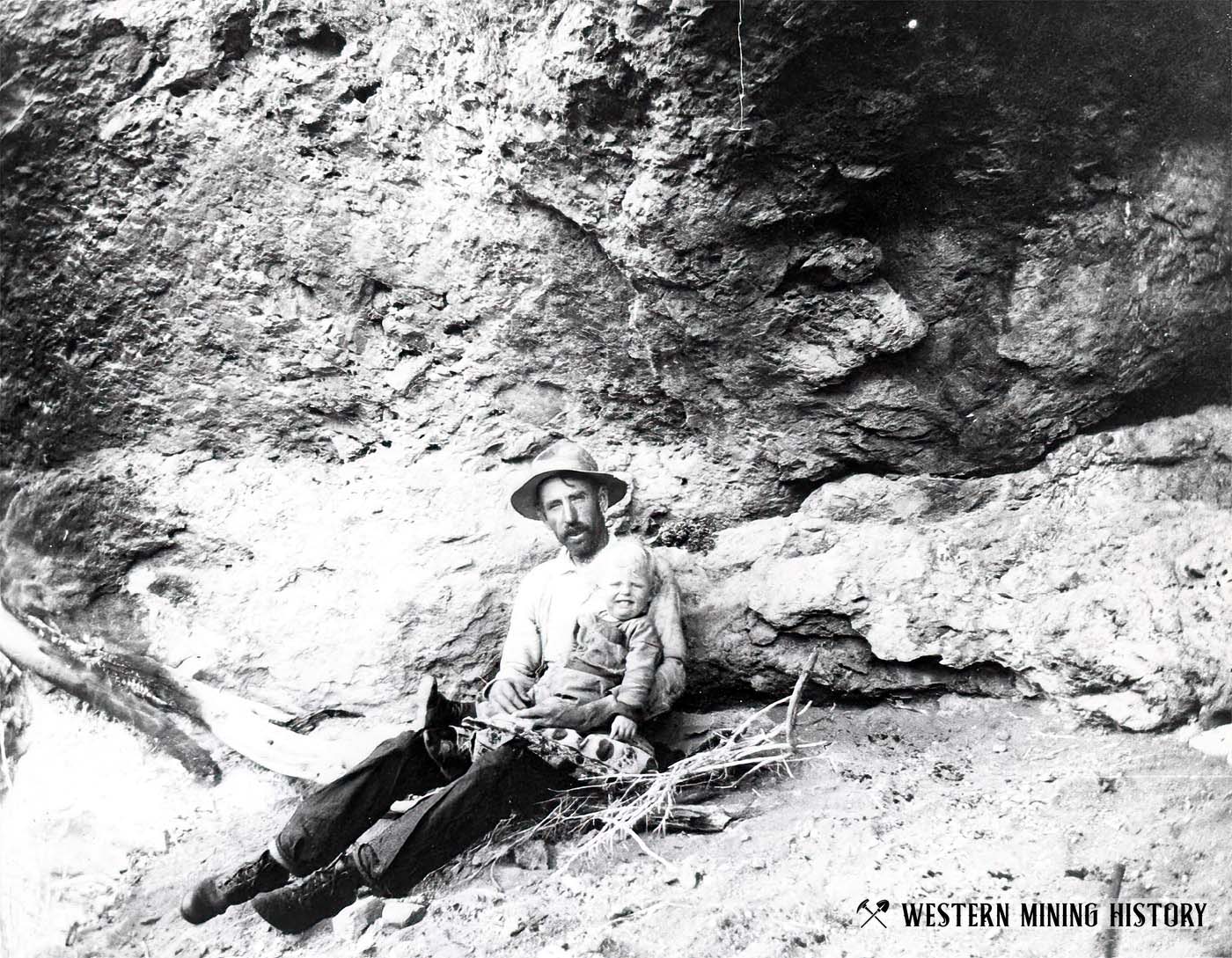
Manhattan
Although mining had occurred in the Manhattan area as early as the 1860s, new gold discoveries after 1900 resulted in a rush to the area, and the town of Manhattan was established in 1905. By spring of 1906 the word of the district’s rich gold deposits got out, and a boom occurred that brought up to 4,000 people to the town in just a matter of weeks.
The following photos depicts a group of men at an outdoor shop in the new town of Manhattan.
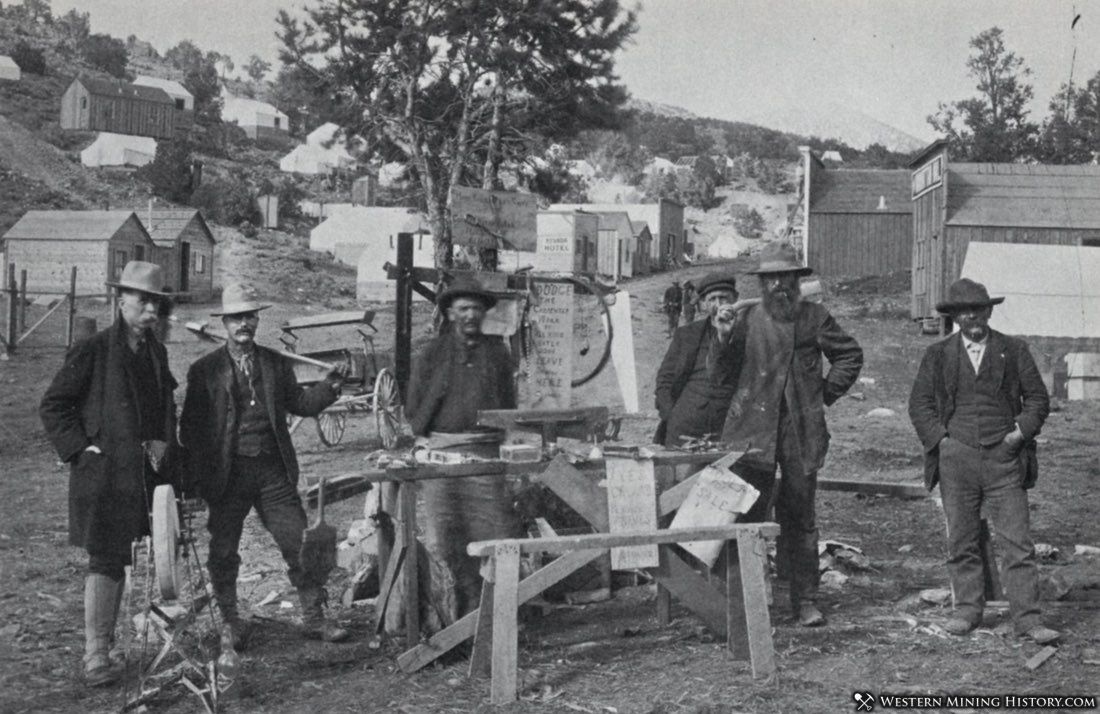
“Cousin Jack” was the term used to describe miners from the Cornwall region of England. In the photo below, a Cousin Jack stands with a pack train laden with supplies.
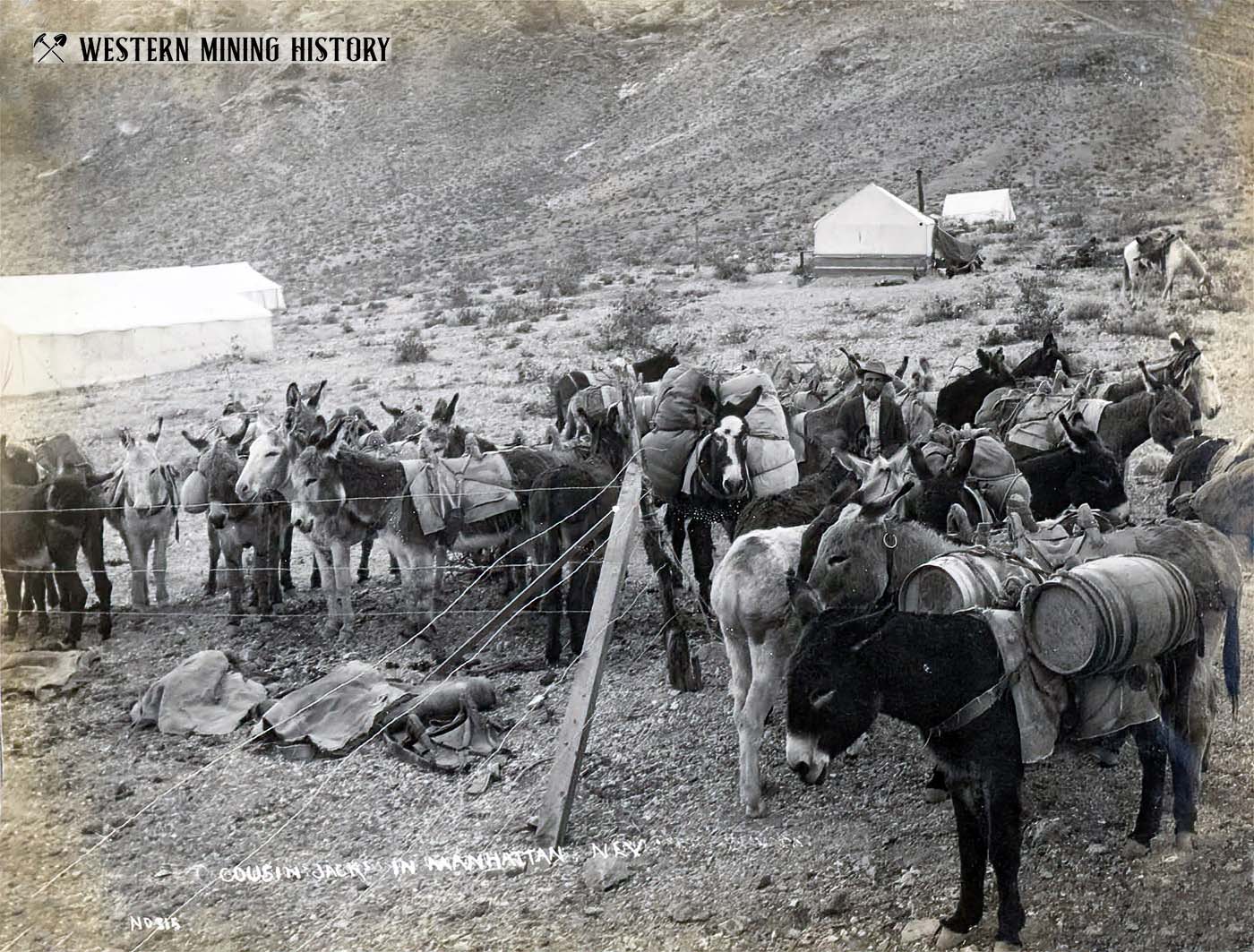
The Comstock Lode
The Comstock Lode is Nevada’s most important historical mining region, so much so that an entirely separate collection of photos has been presented for that area: The Comstock Lode: Nevada’s “Big Bonanza”
More Nevada Mining Scenes
The Keystone Mine at Goodsprings, Nevada was a producer of gold, copper, and silver. In the photo below, miners pose underground as they work by candlelight.
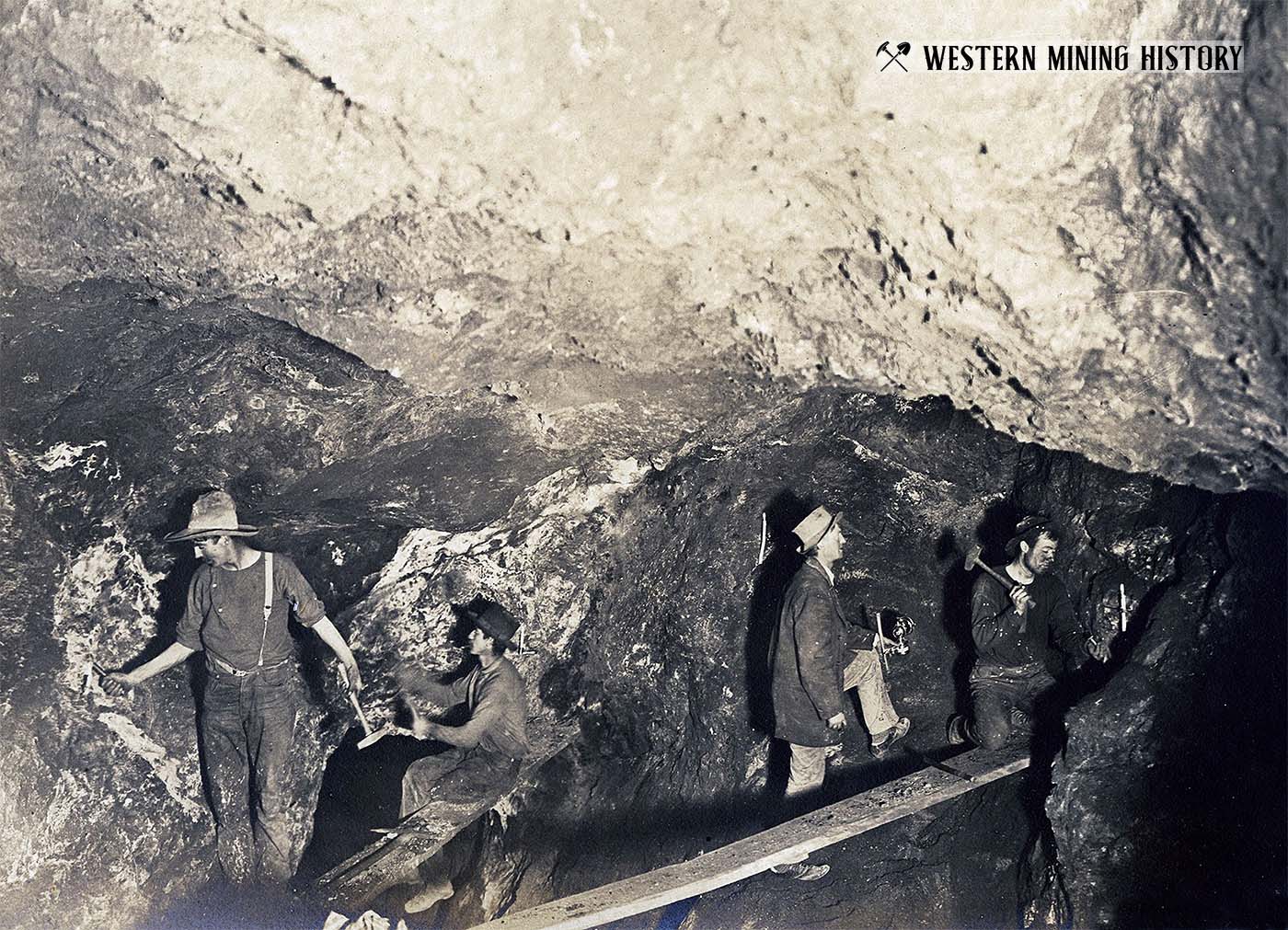
Round Mountain was the location of incredibly rich gold mines. The mines here were also noteworthy for the stunning specimen gold that was recovered here. Seen below is another day at the office for a miner at Round Mountain–in a stope over 700 feet below ground.
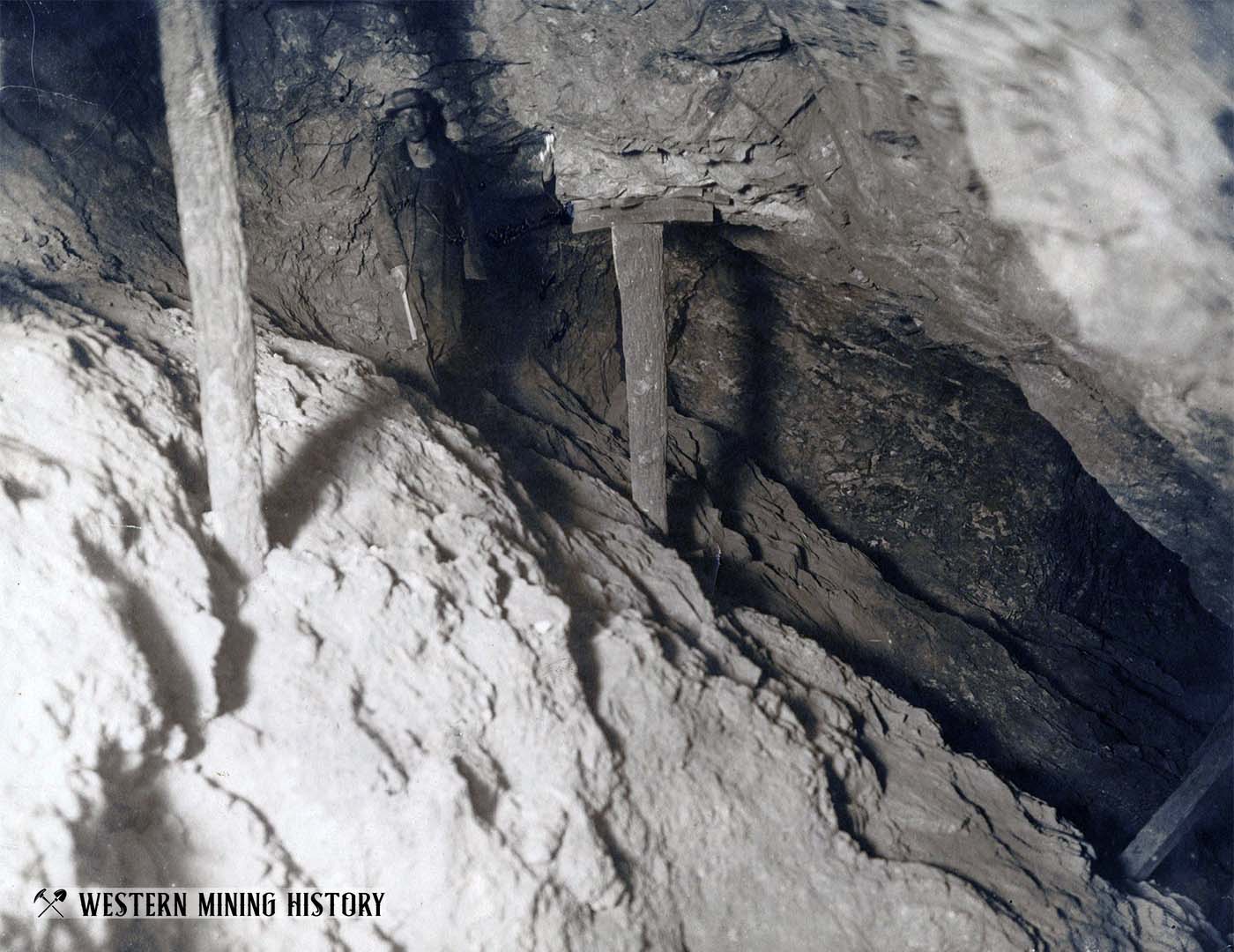
This 1871 photo from the Pahranaget Lake District (Hiko) shows the enormous work done by hand to open the early mines of the state.
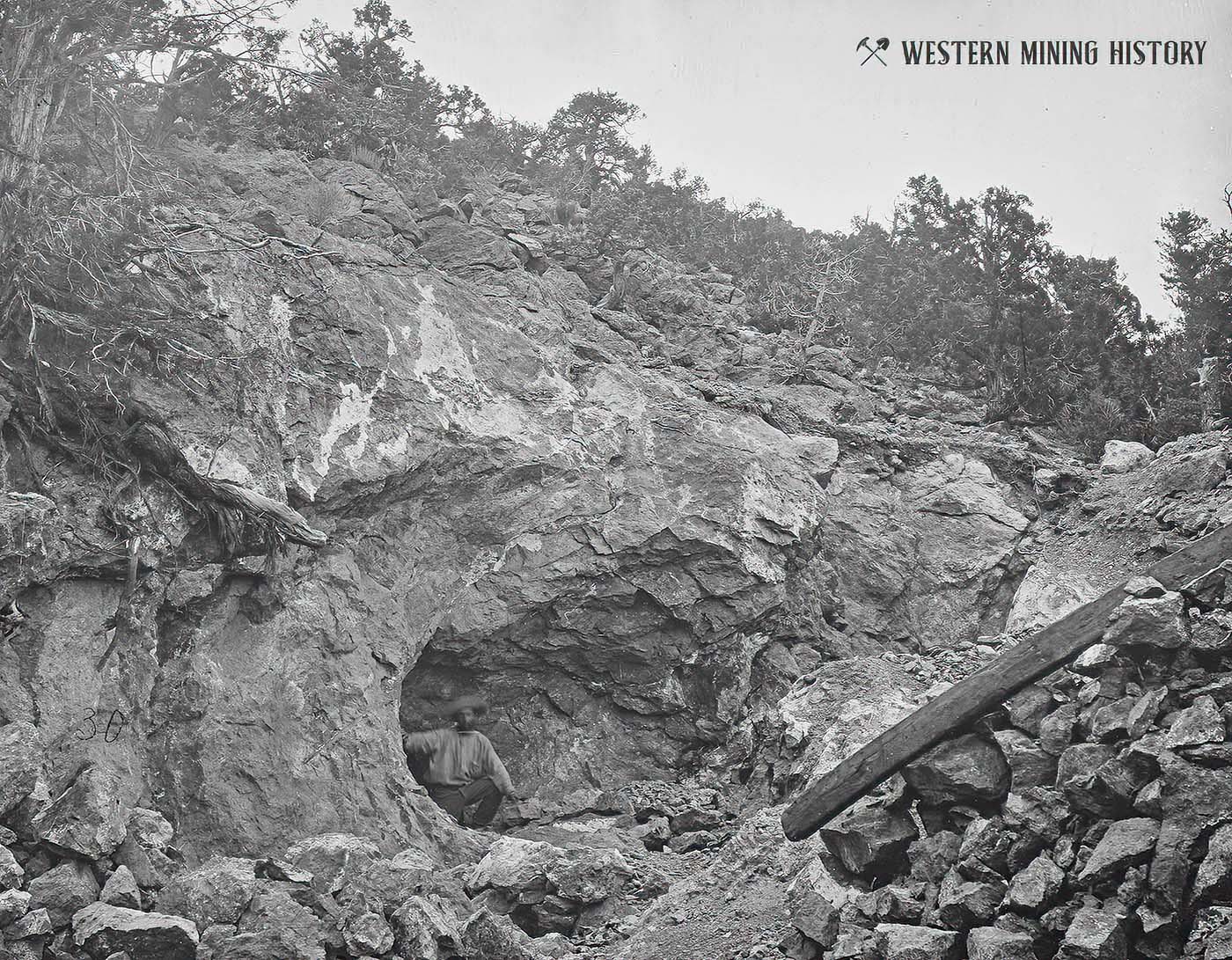
More Photo Collections from Western Mining History
The following collections capture more of the West’s amazing mining history:
A Collection of Arizona Mining Photos
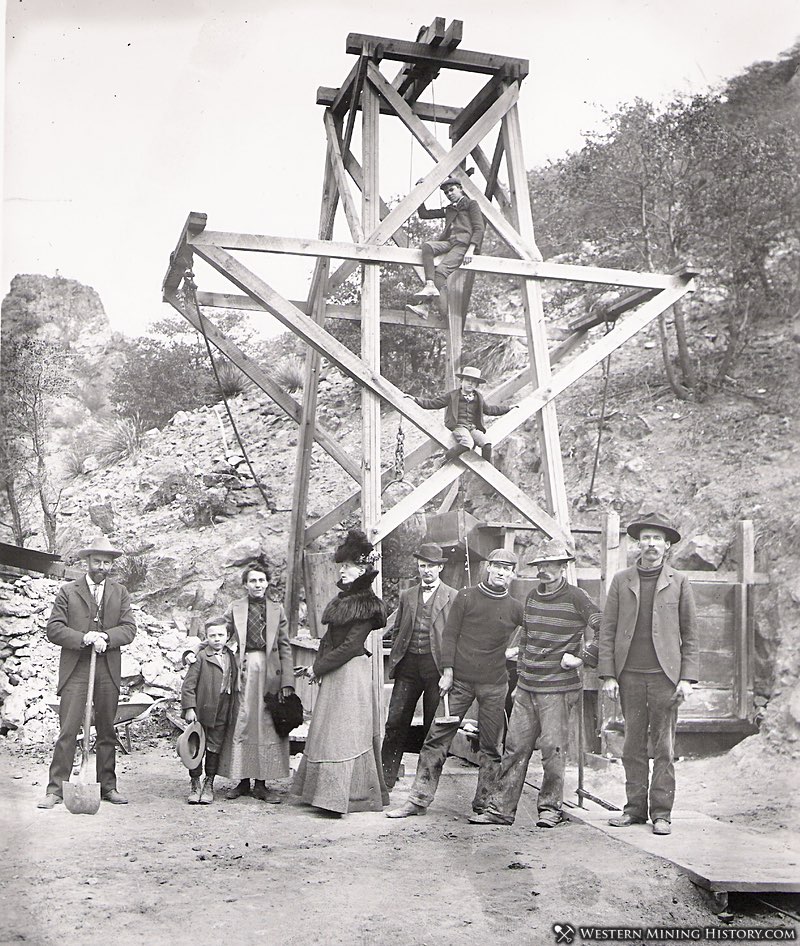
A Collection of Arizona Mining Photos highlights some of the best historic scenes from various Arizona districts during the peak mining years between the 1870s and the 1920s.
50 Incredible Photos of Colorado Mining Scenes
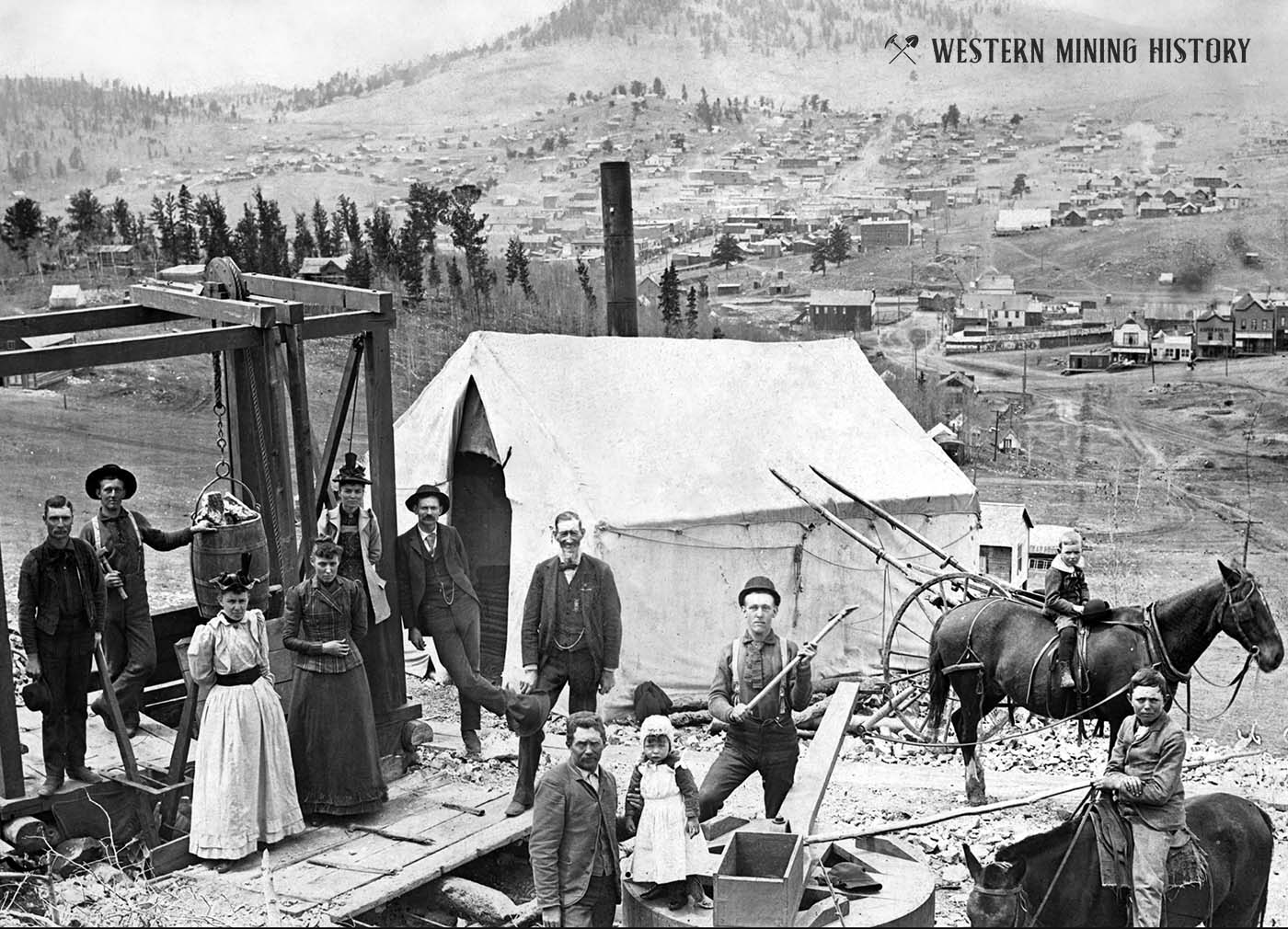
Colorado’s spectacular scenery and the richness of the state’s mines attracted many of the top photographers working at the time. These are some of the most incredible mining scenes from the state of Colorado: 50 Incredible Photos of Colorado Mining Scenes
Best Historical Photos: Colorized Mining Scenes
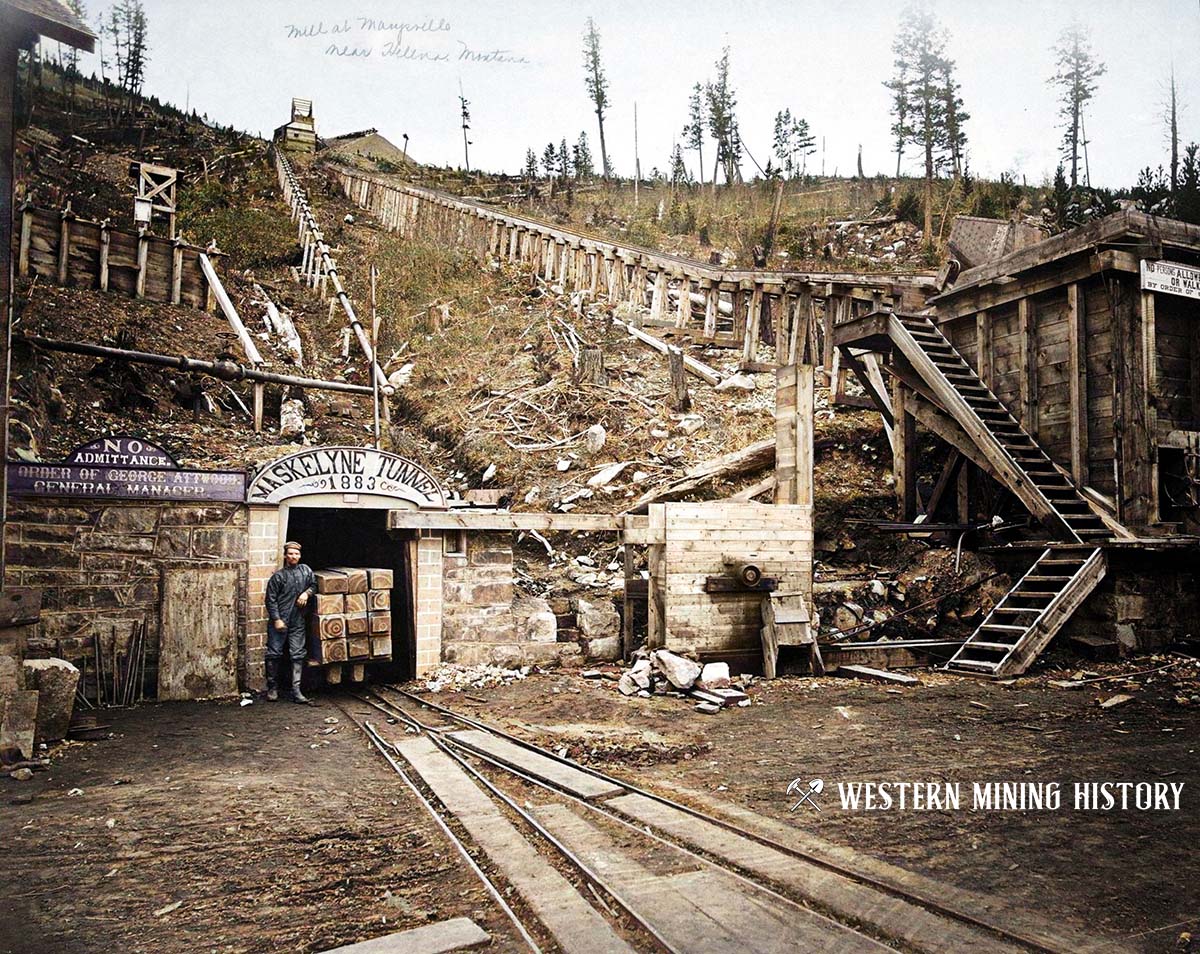
This collection images highlights some of the best colorized photos of historic western mining scenes. Included are mines, miners, historic mining towns, and related scenes: Best Historical Photos: Colorized Mining Scenes
